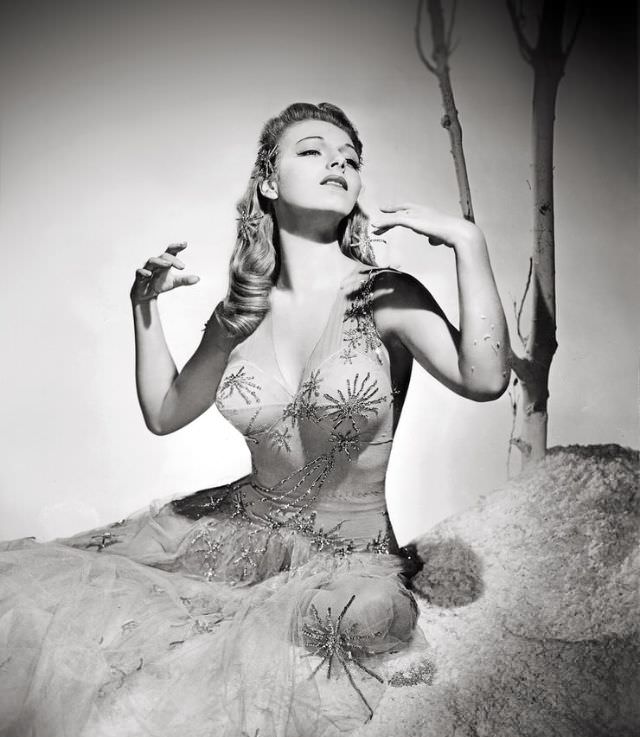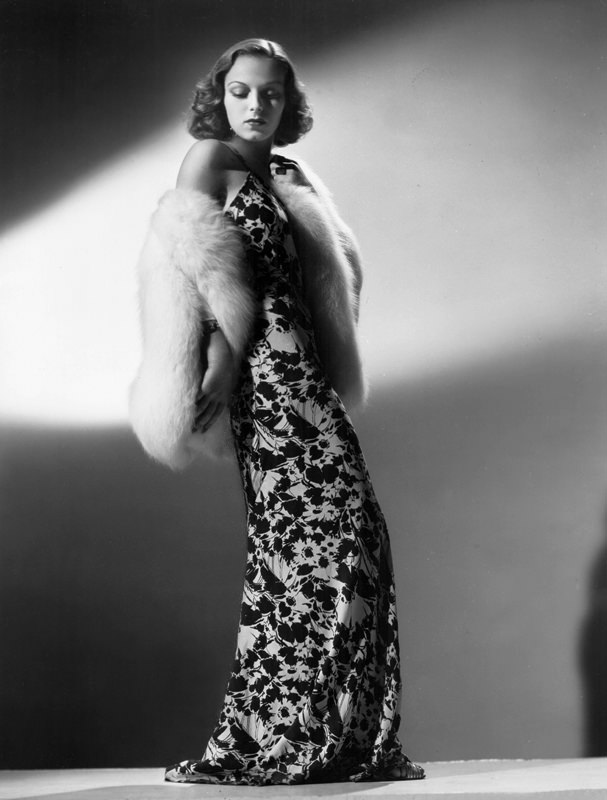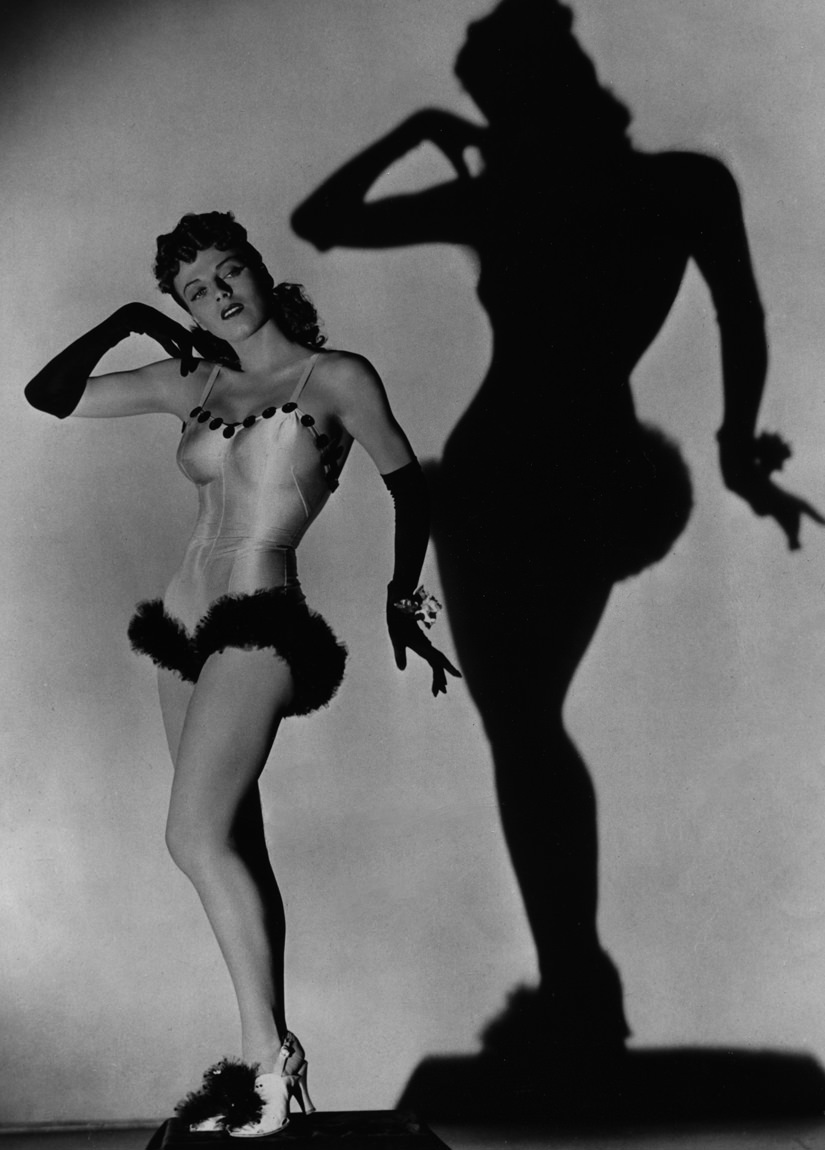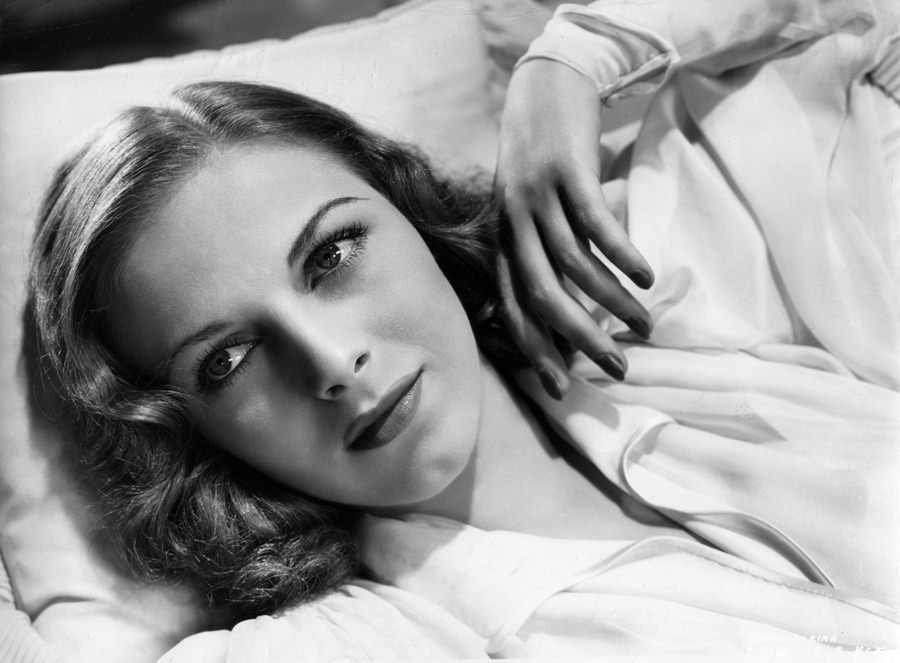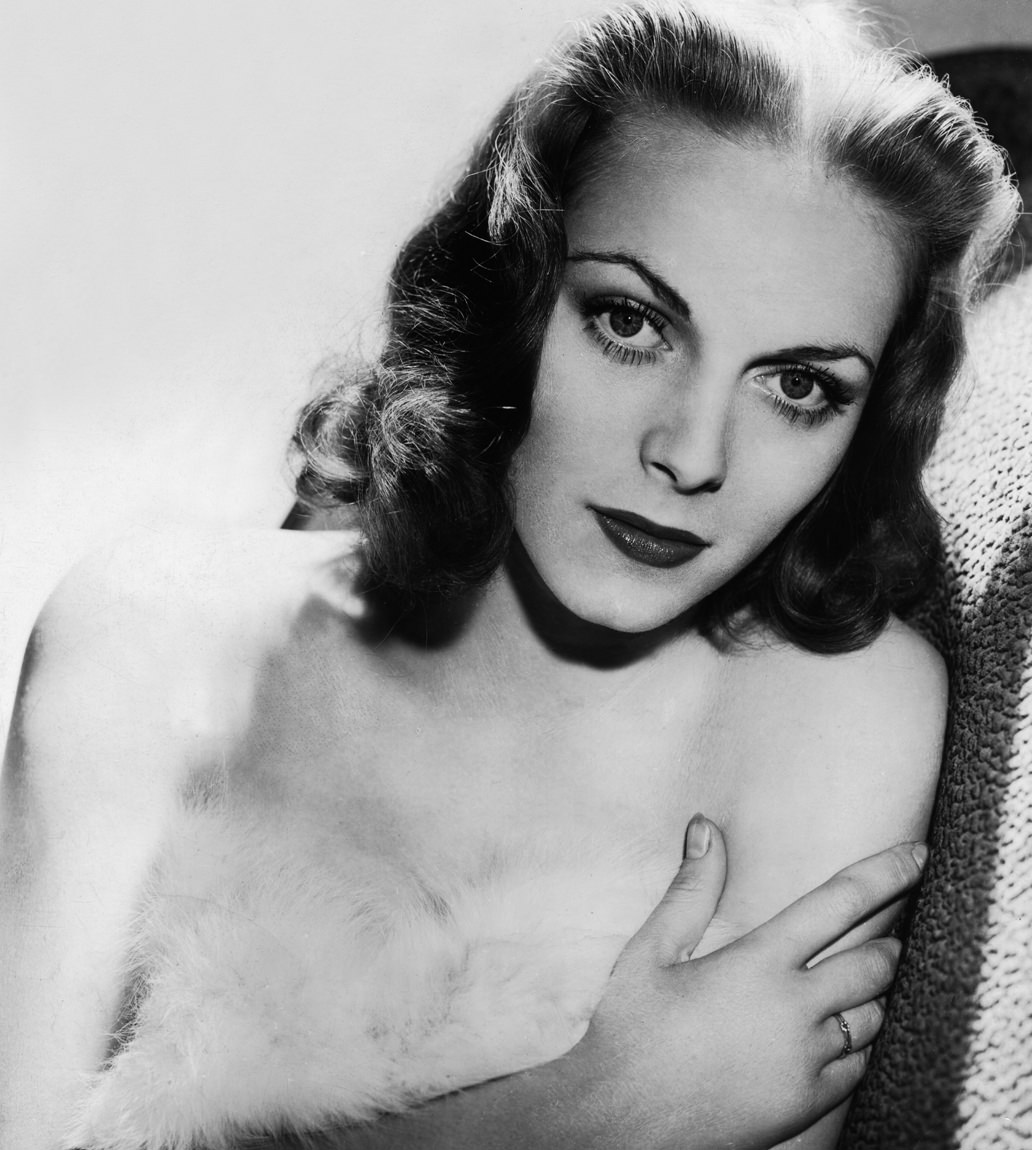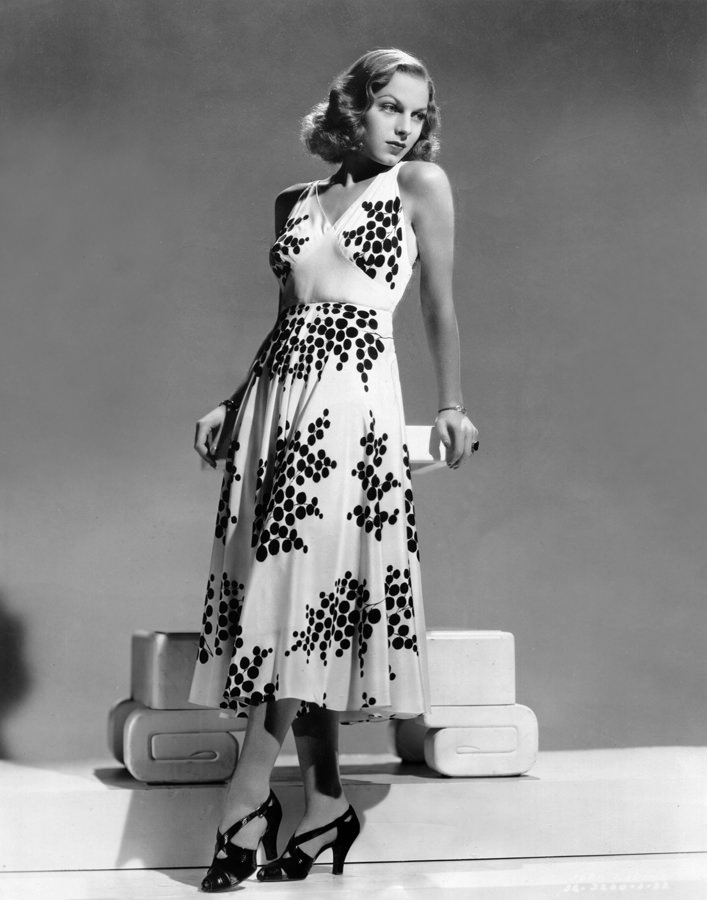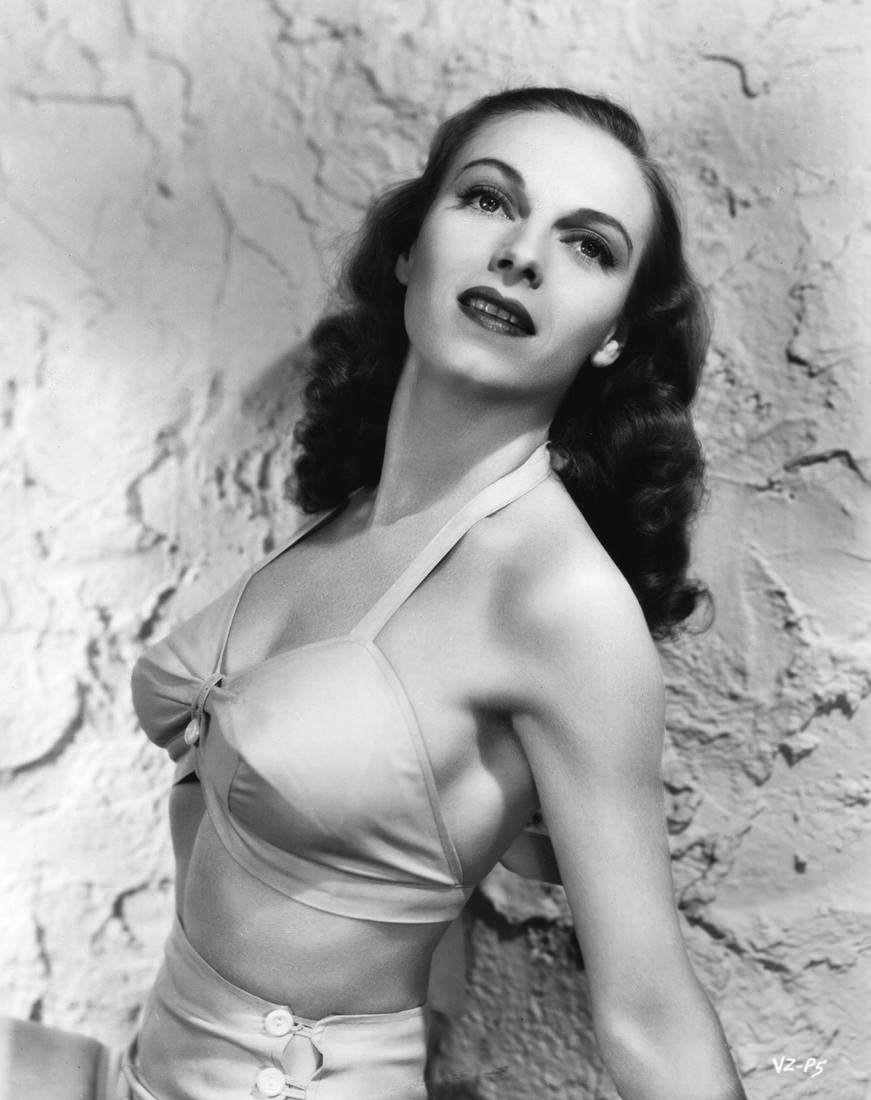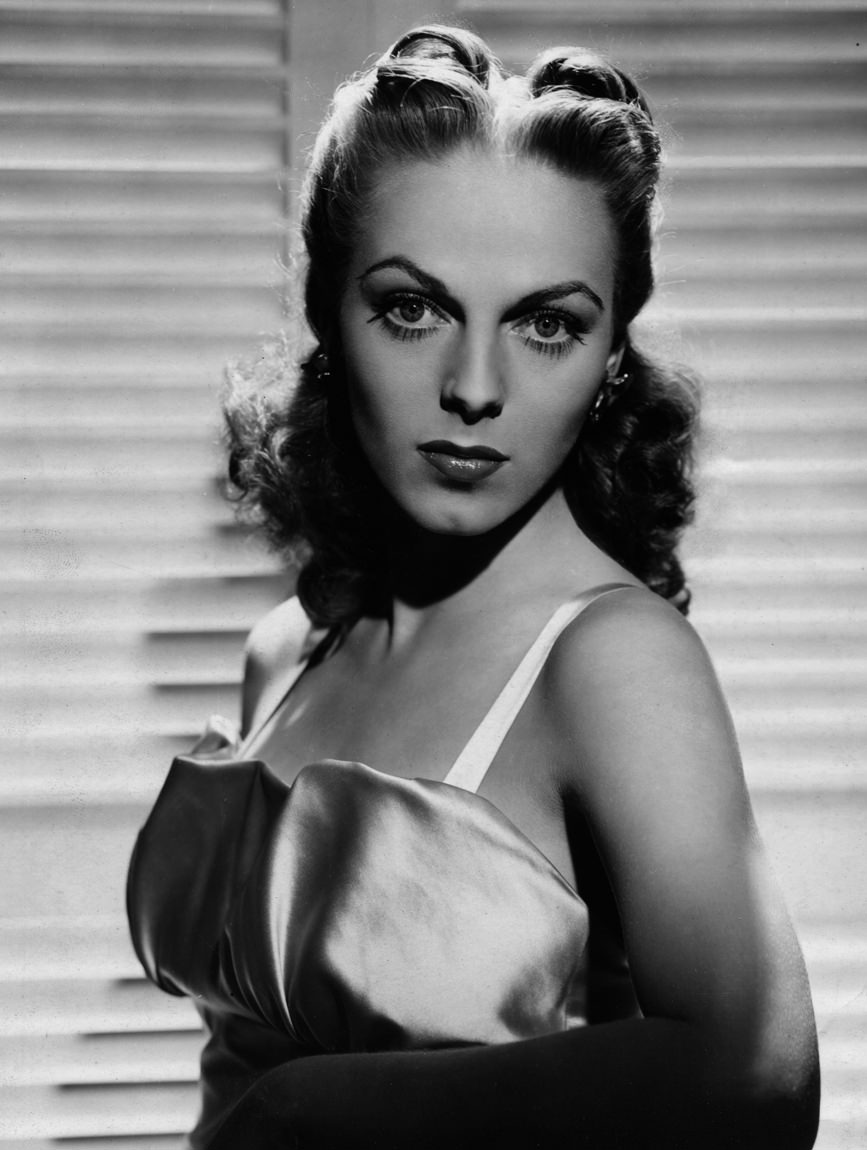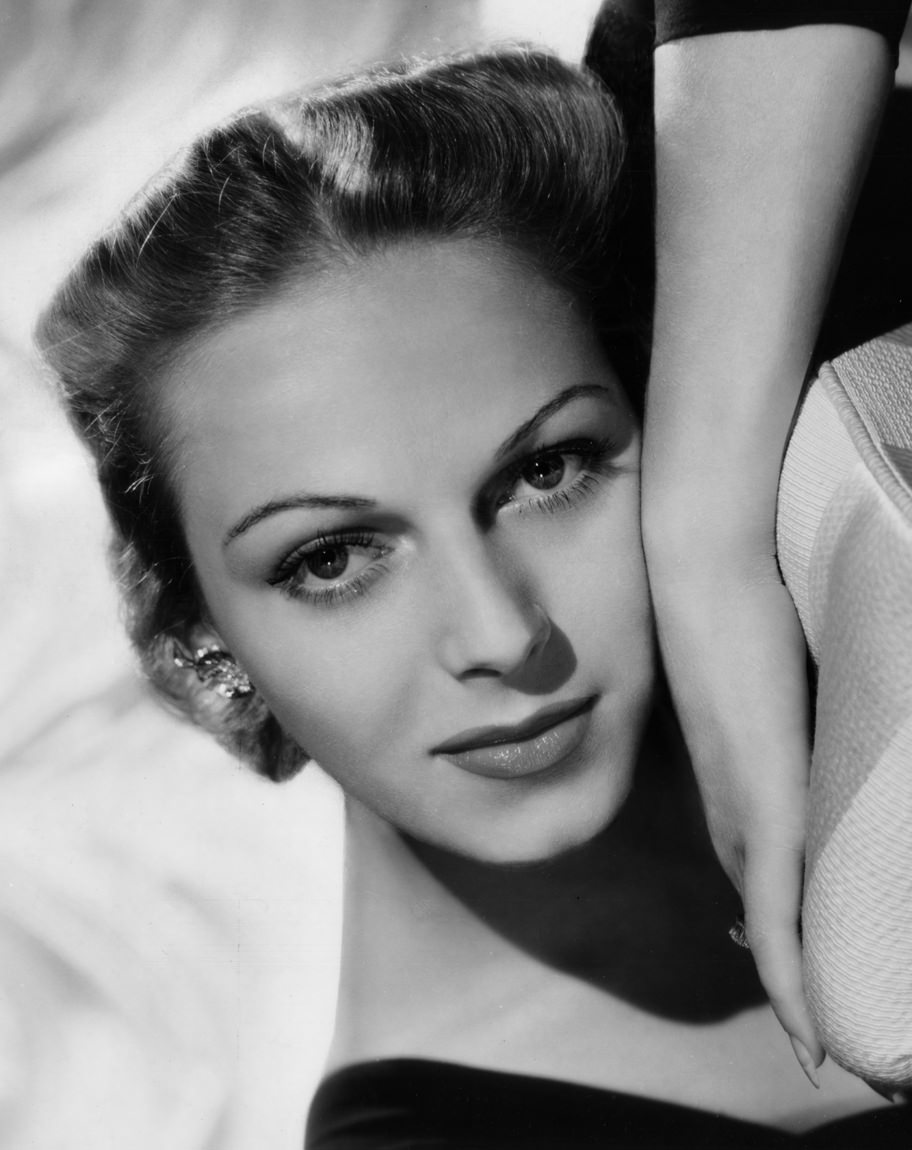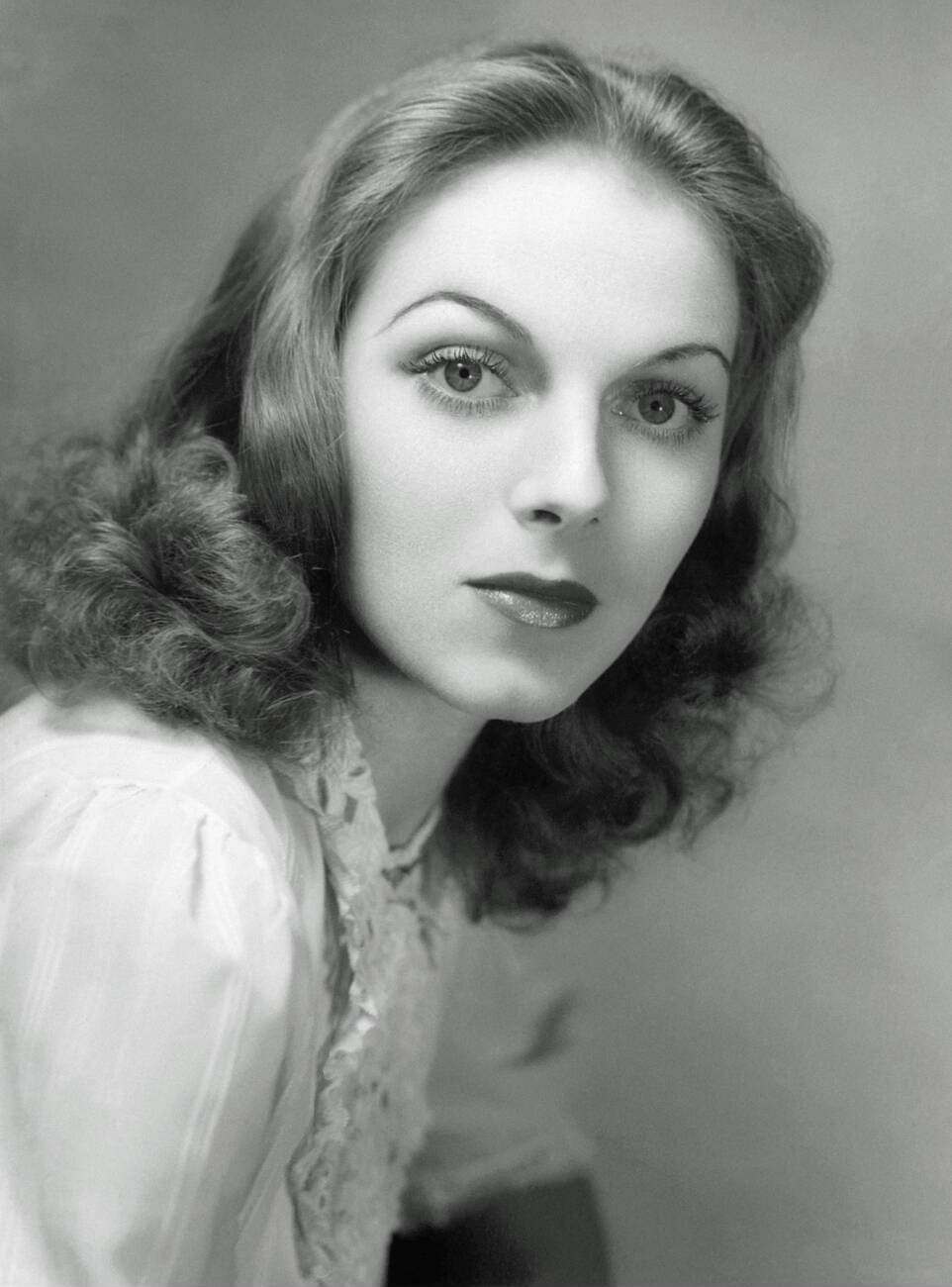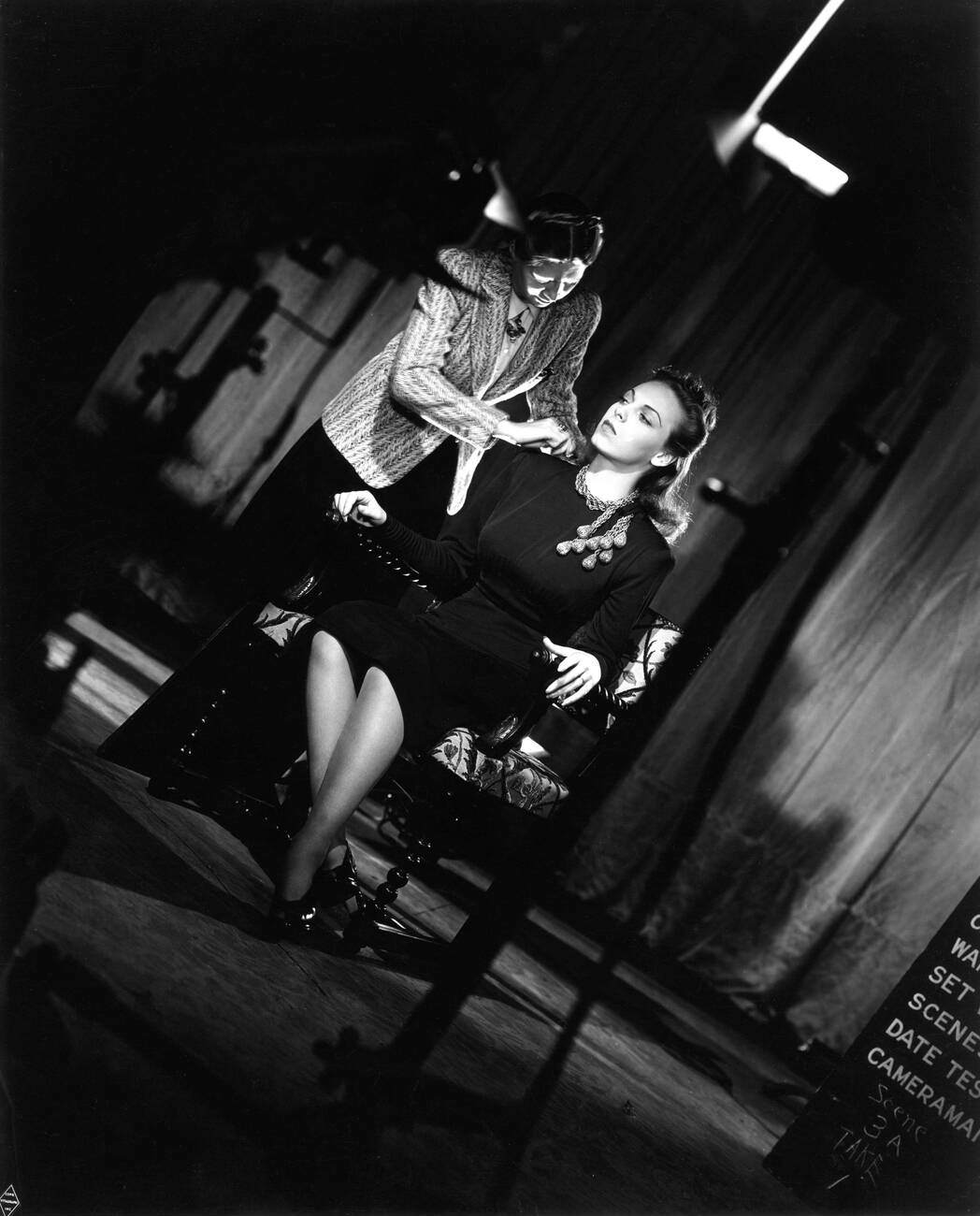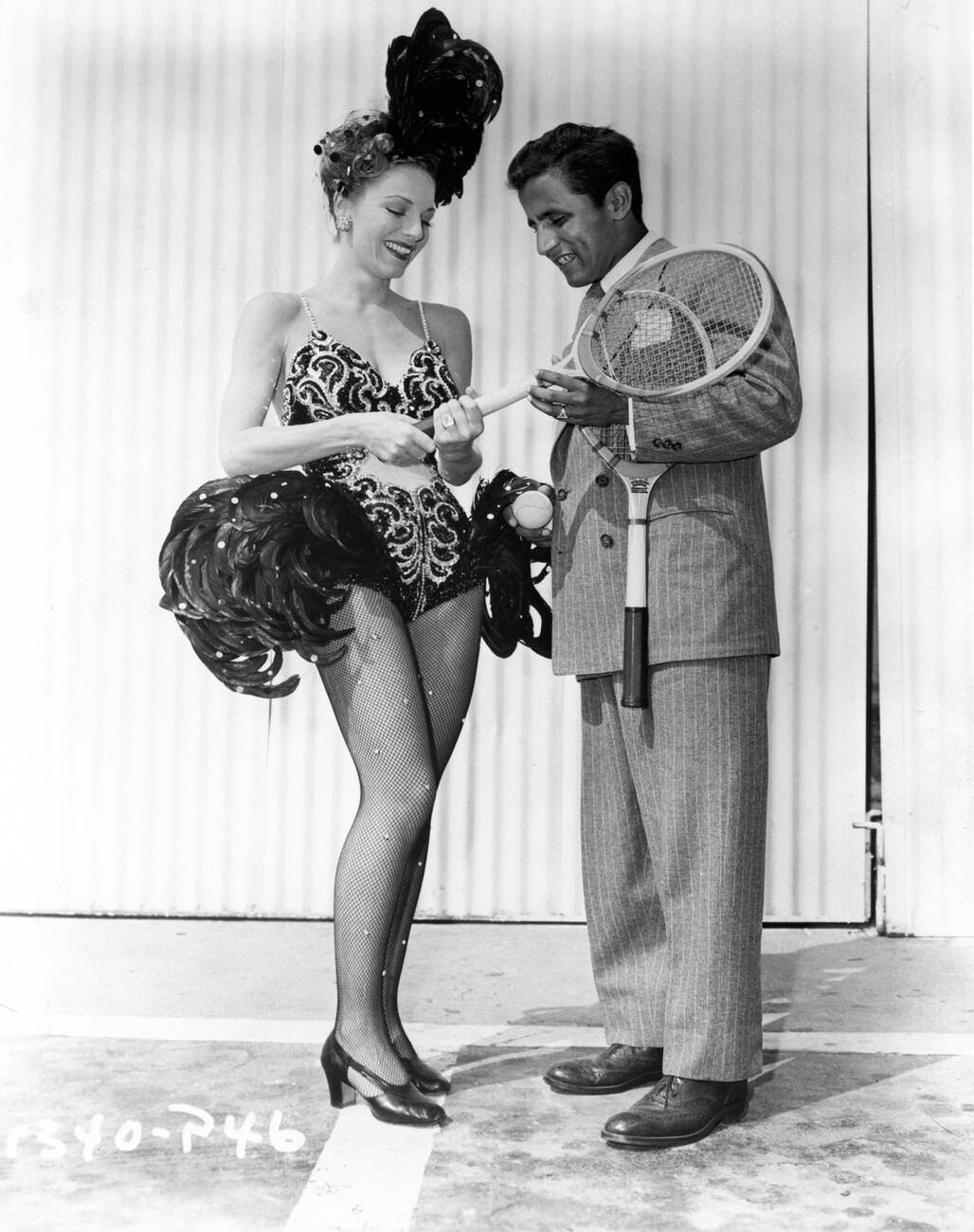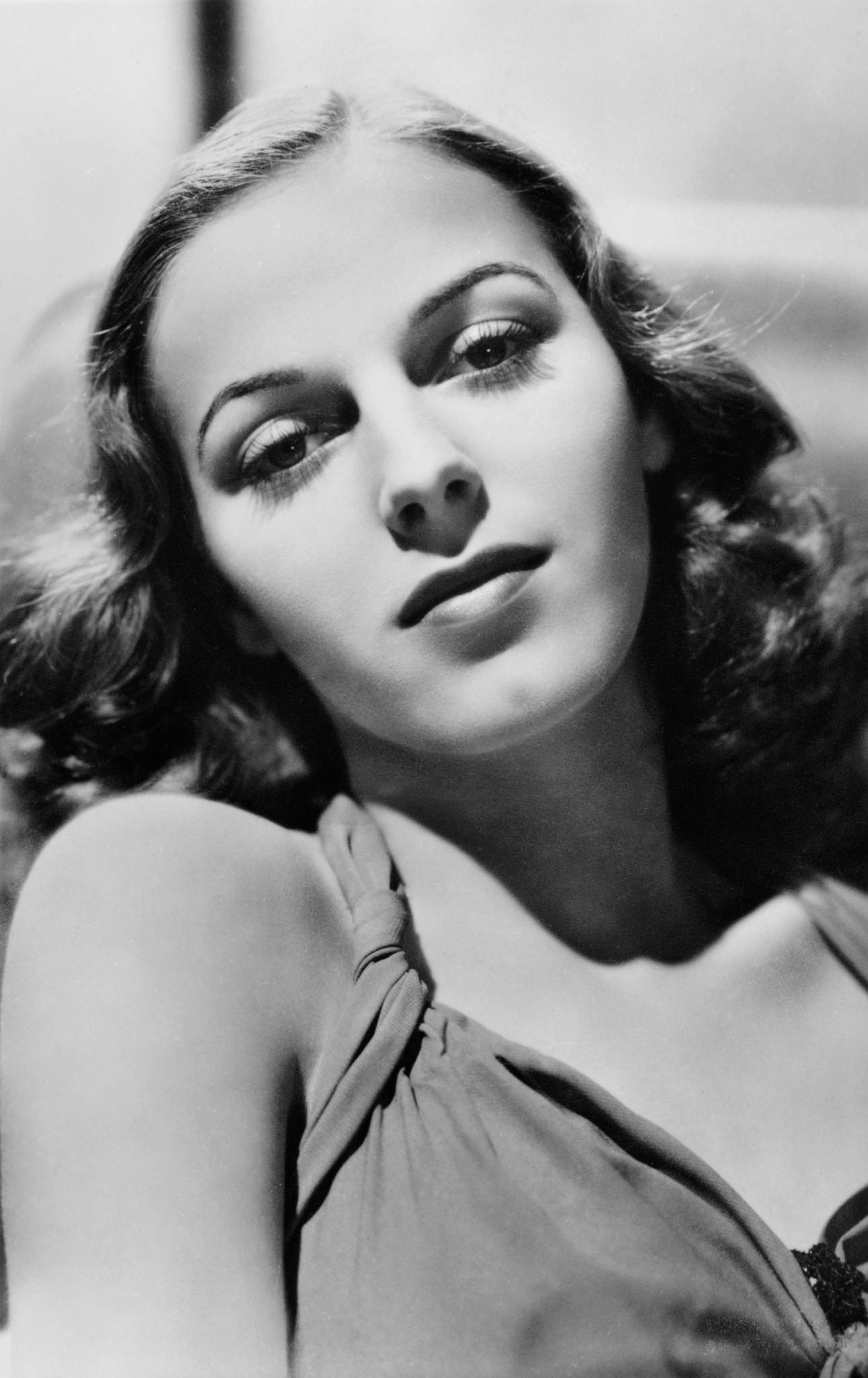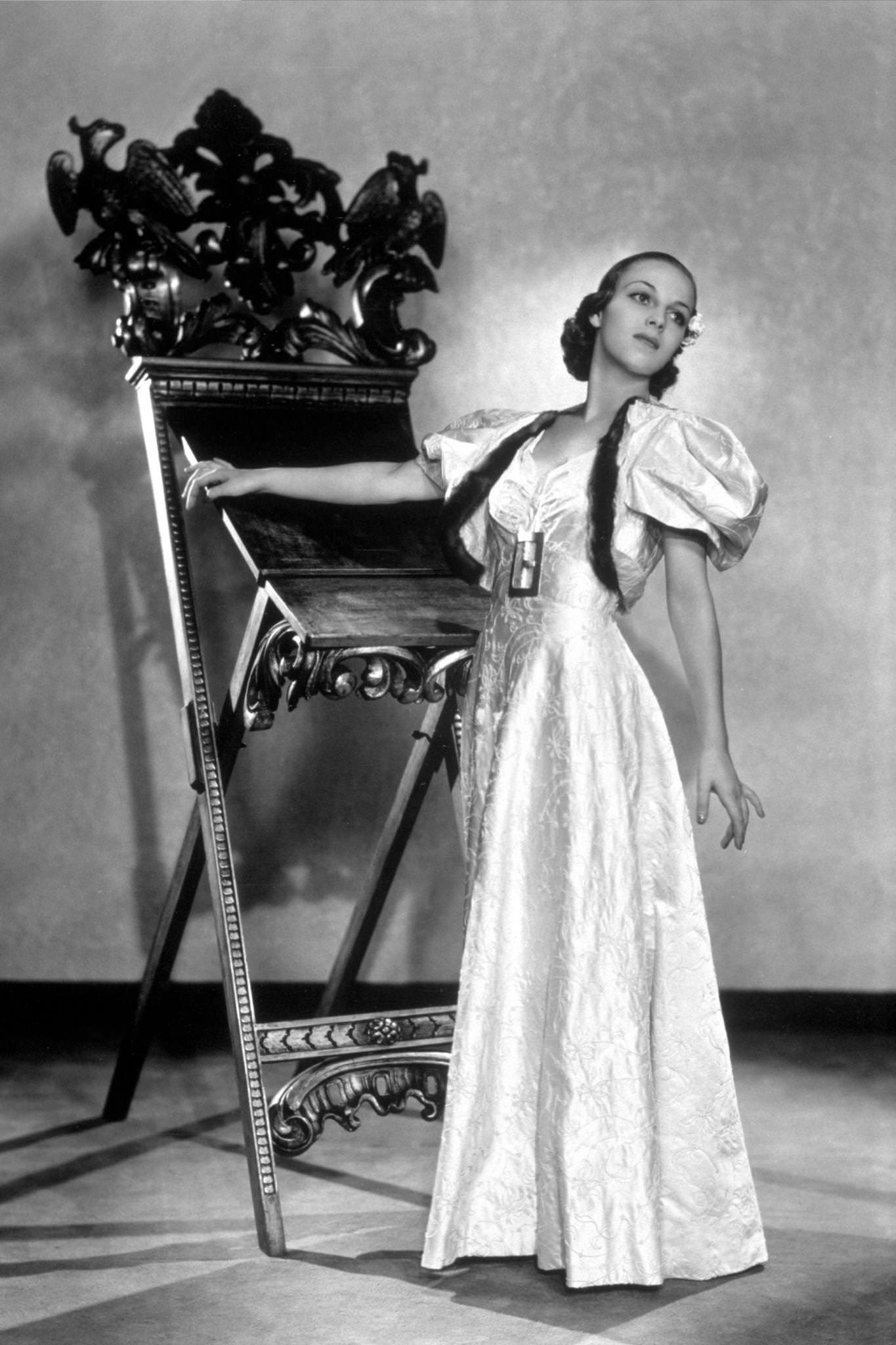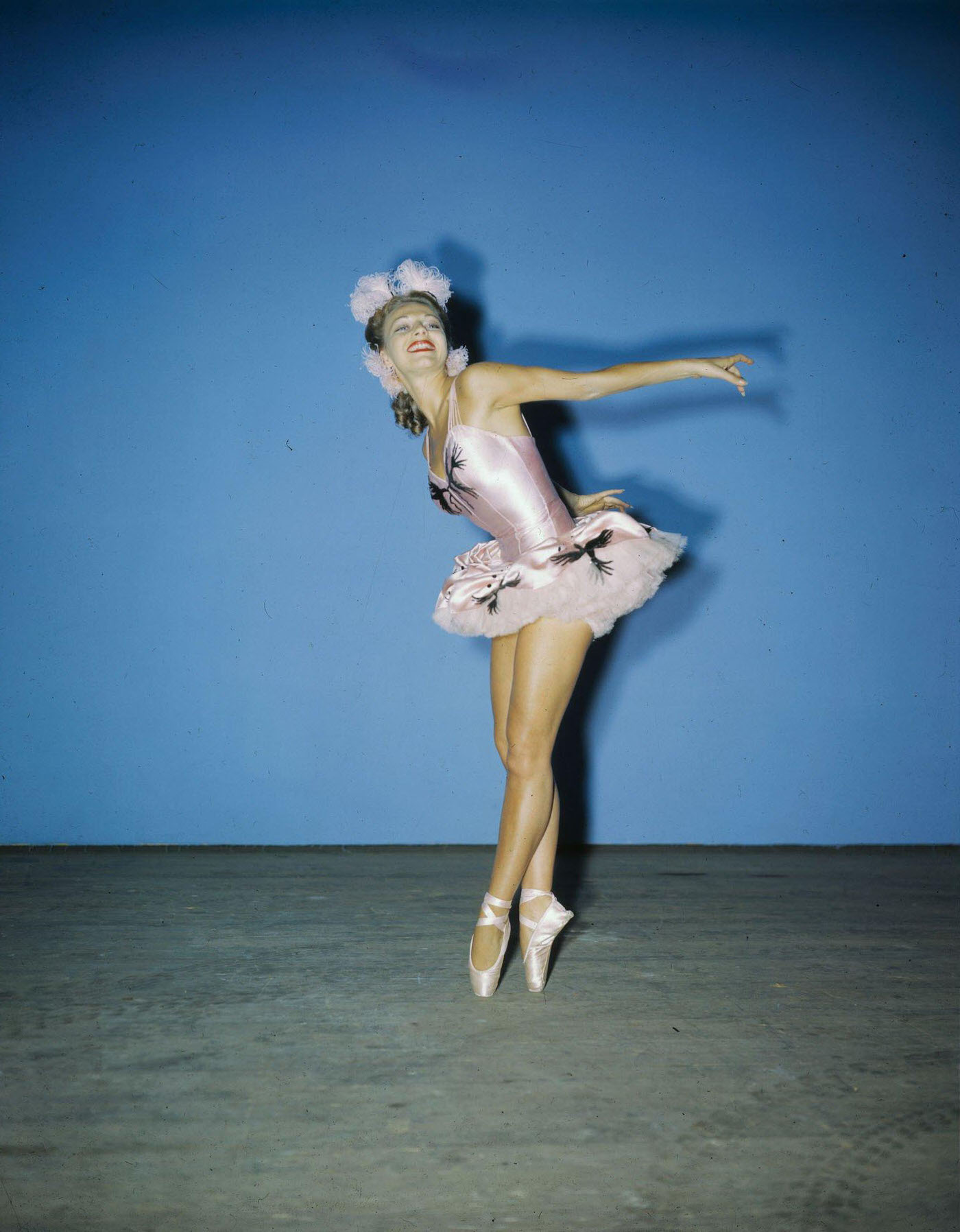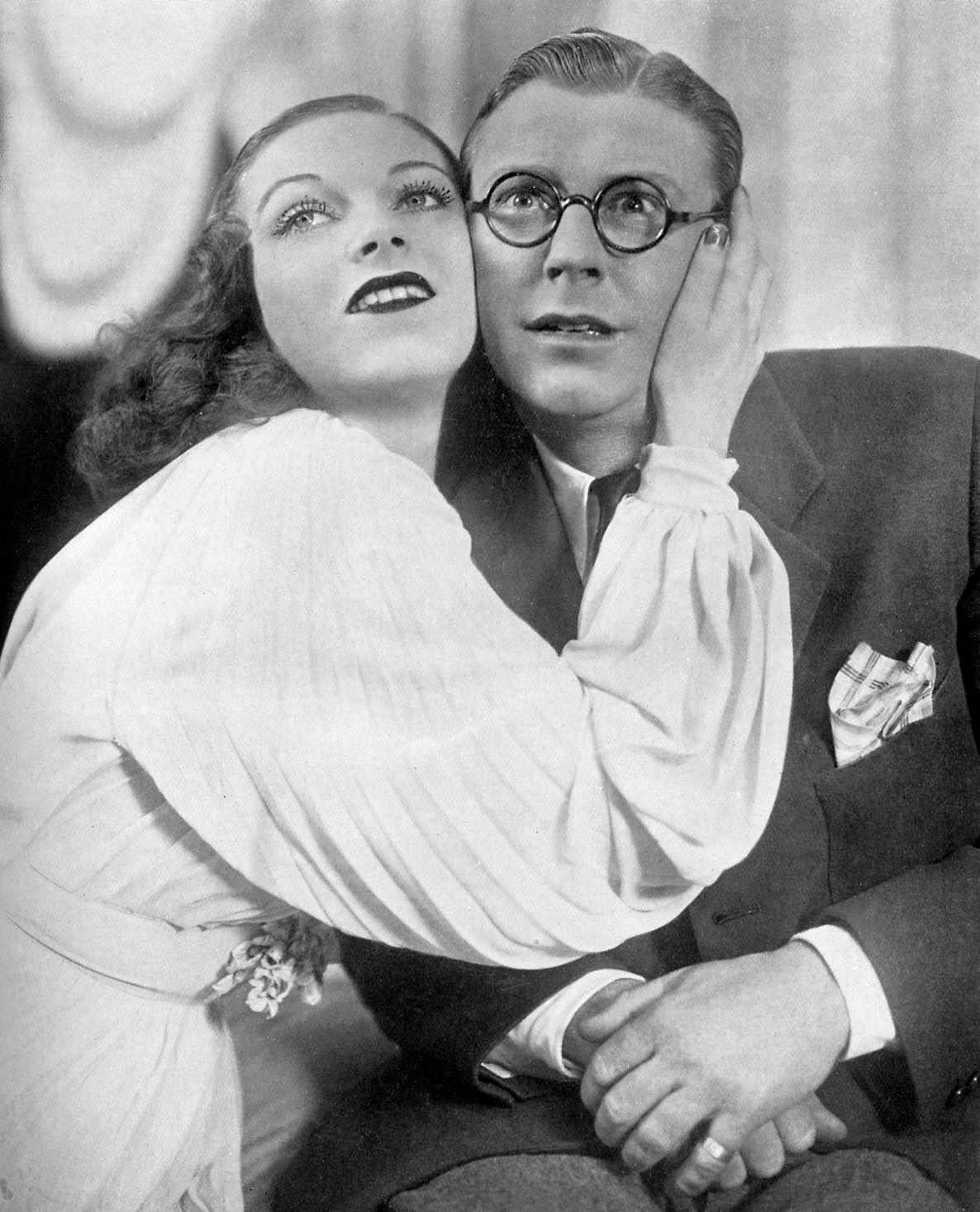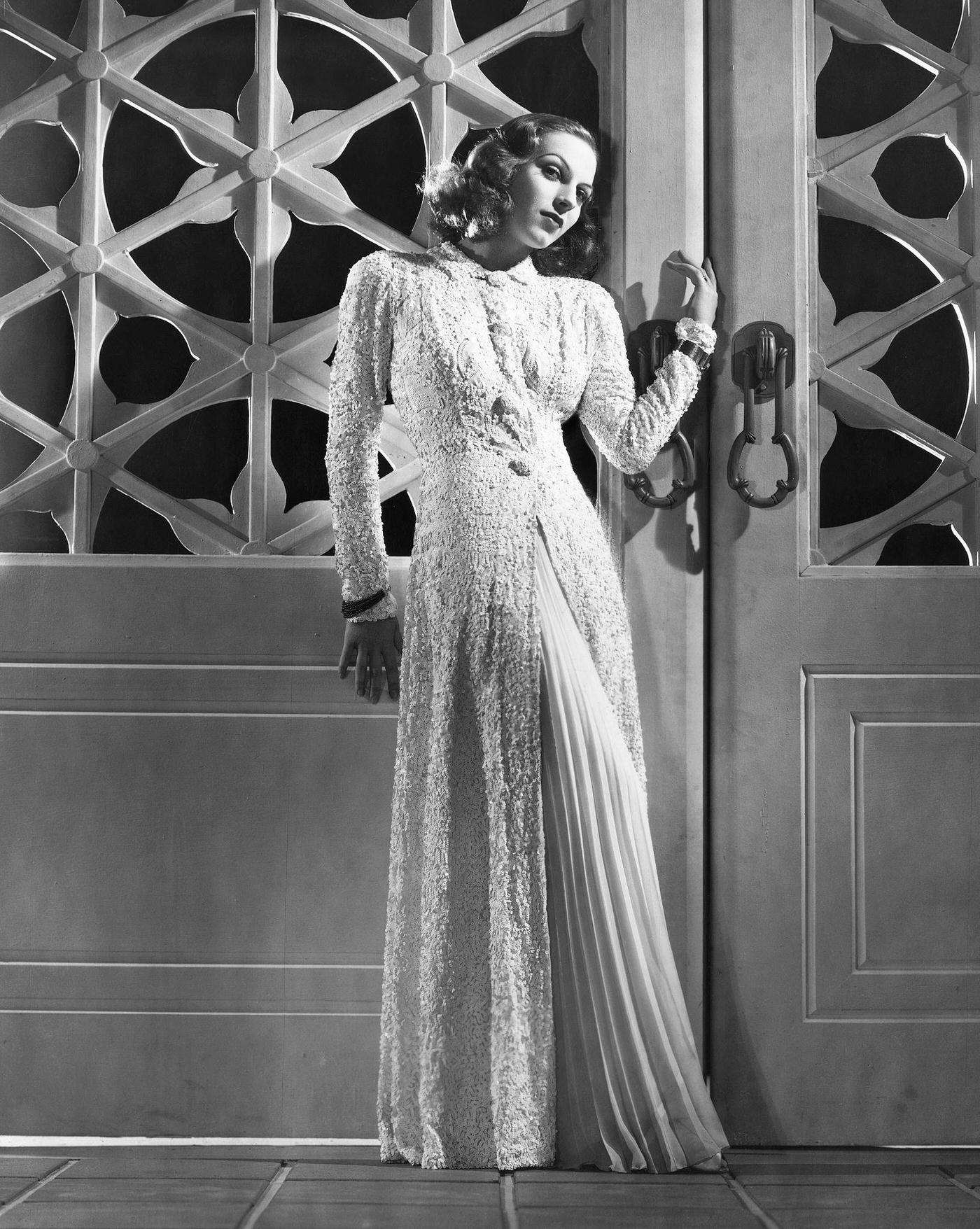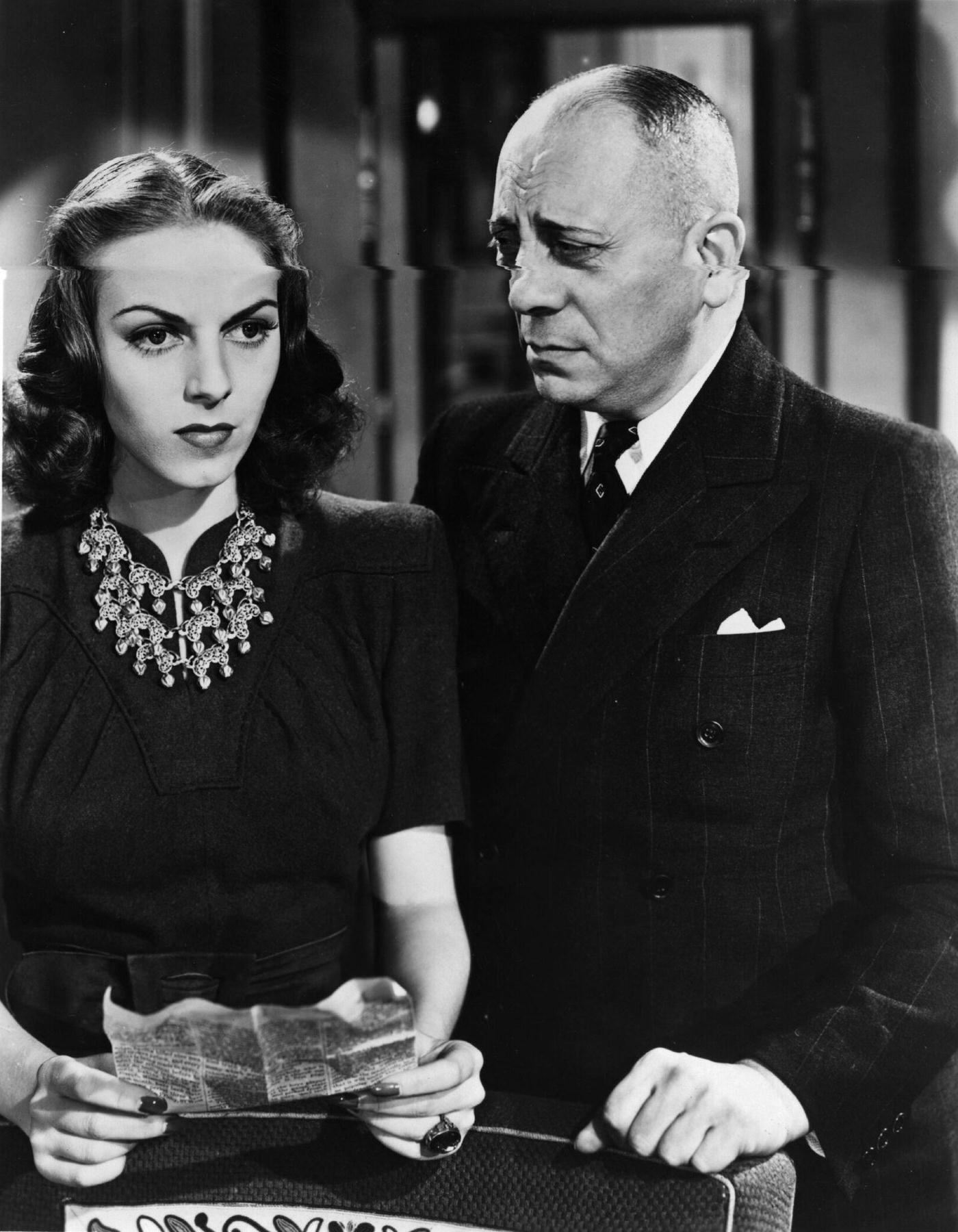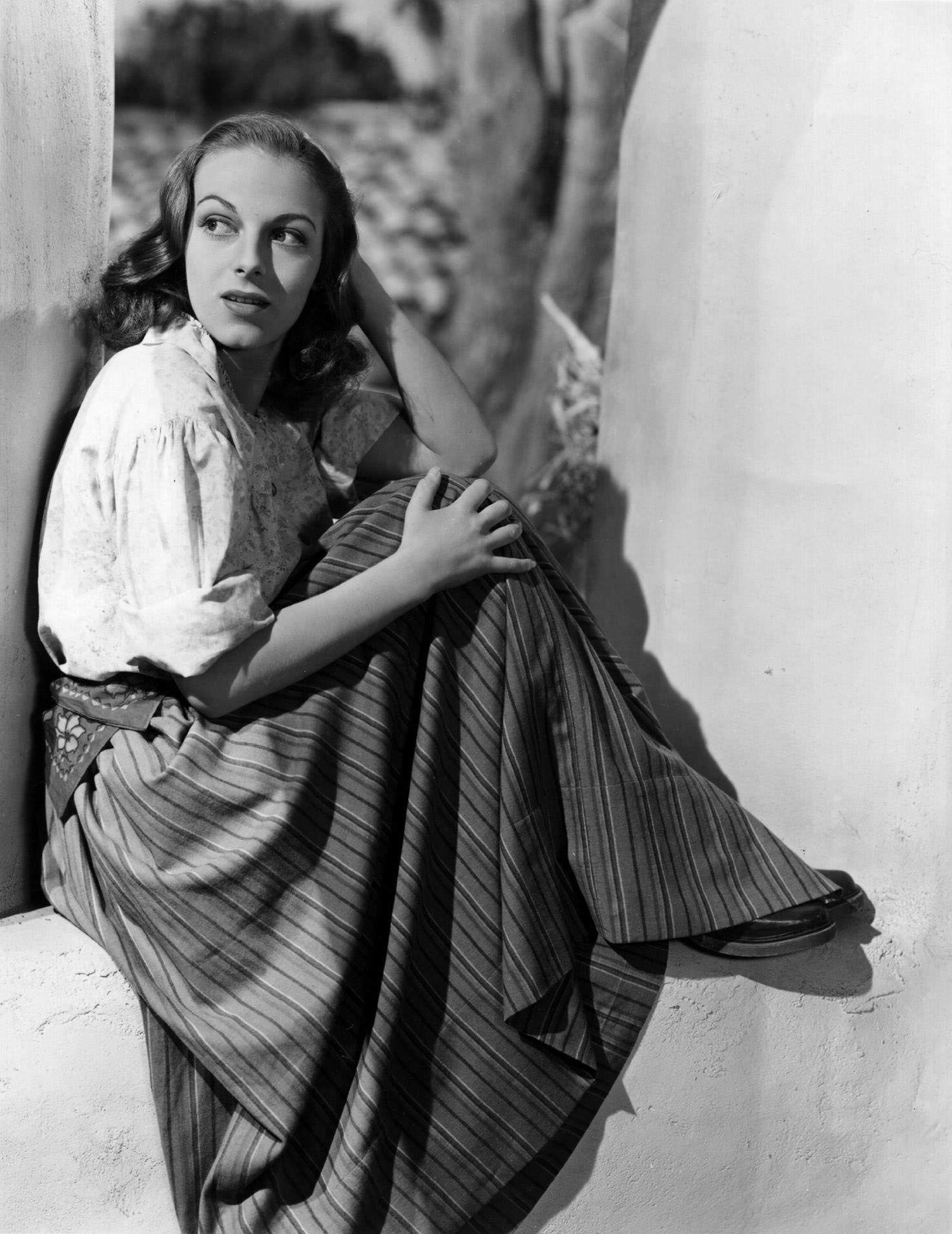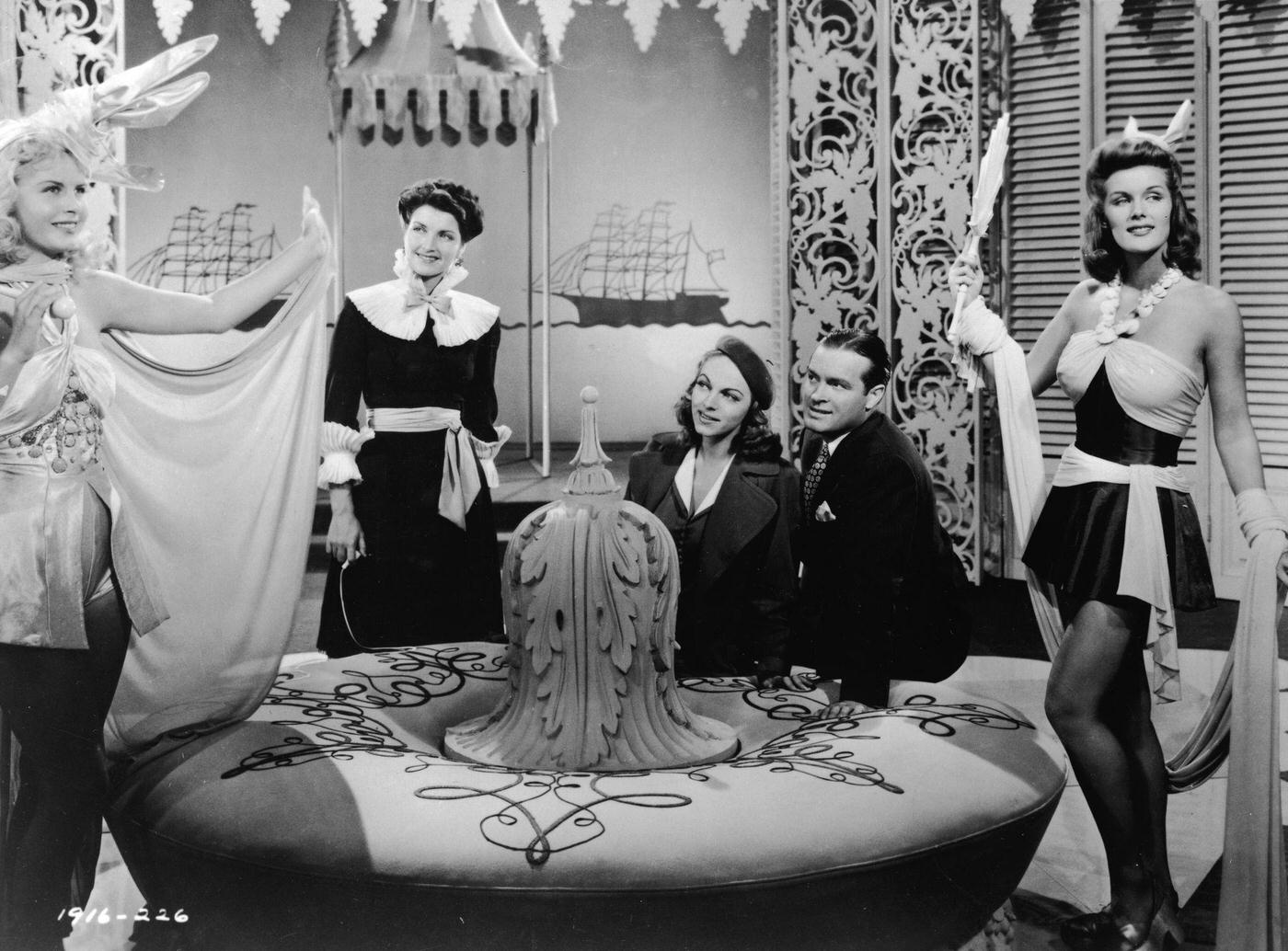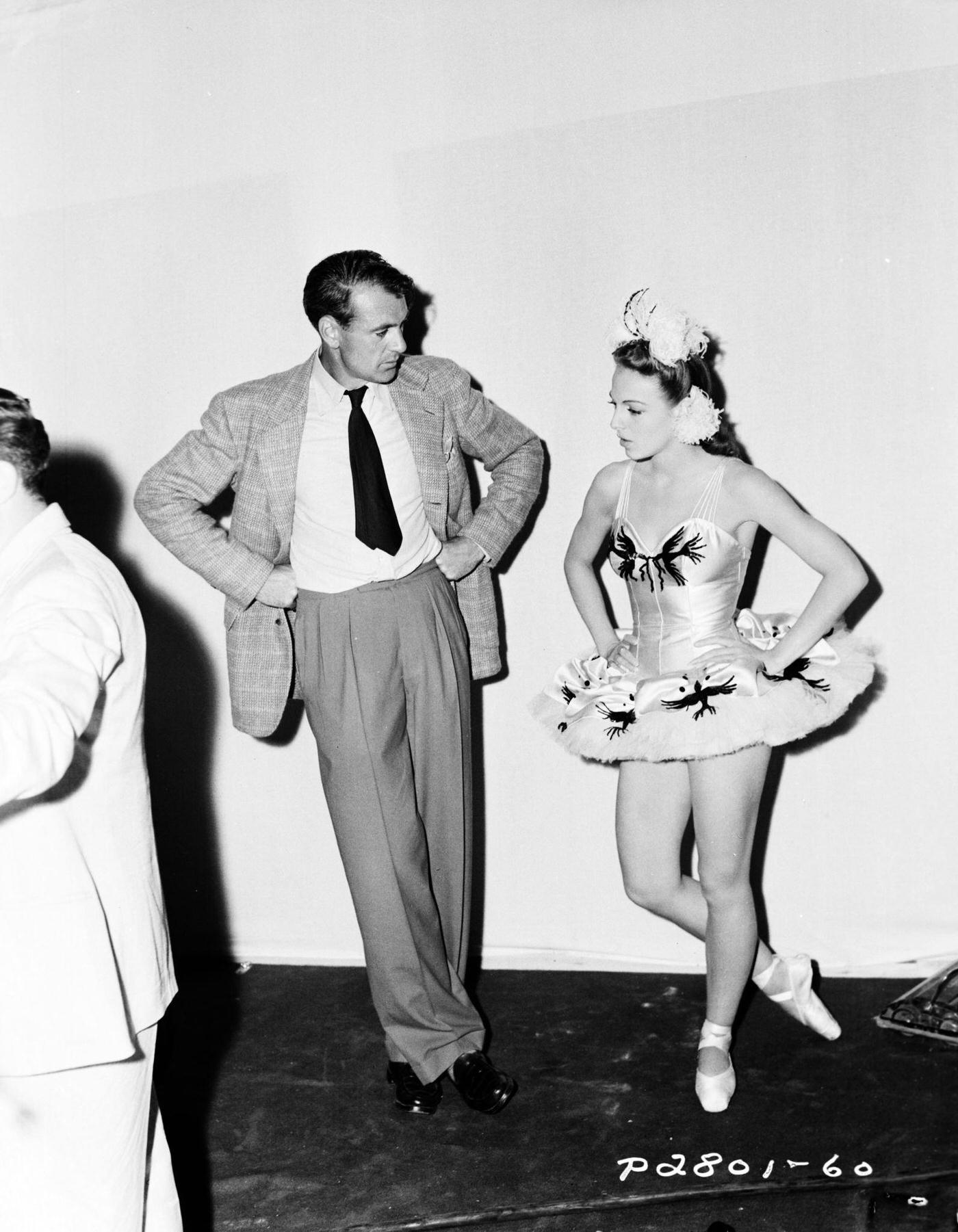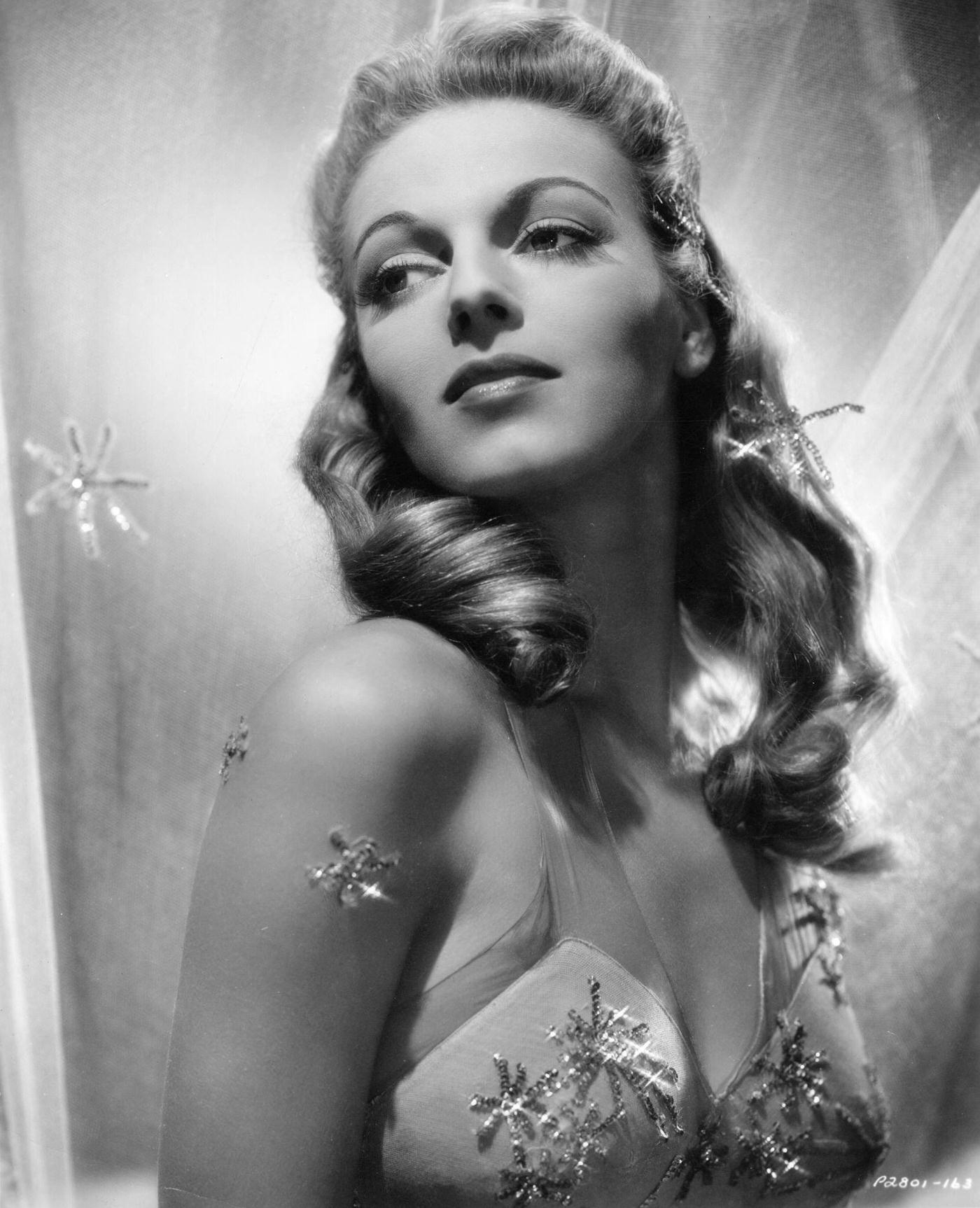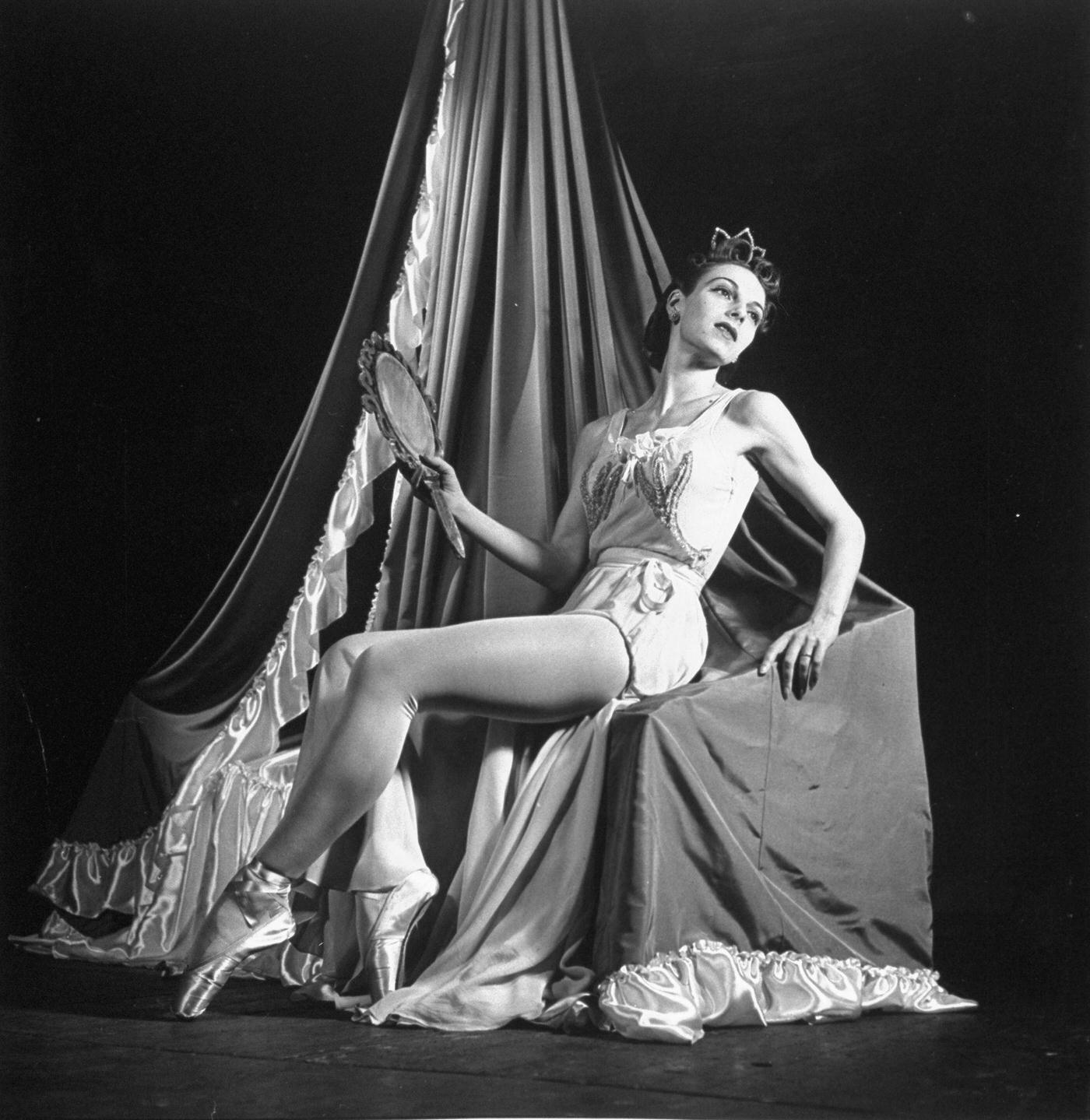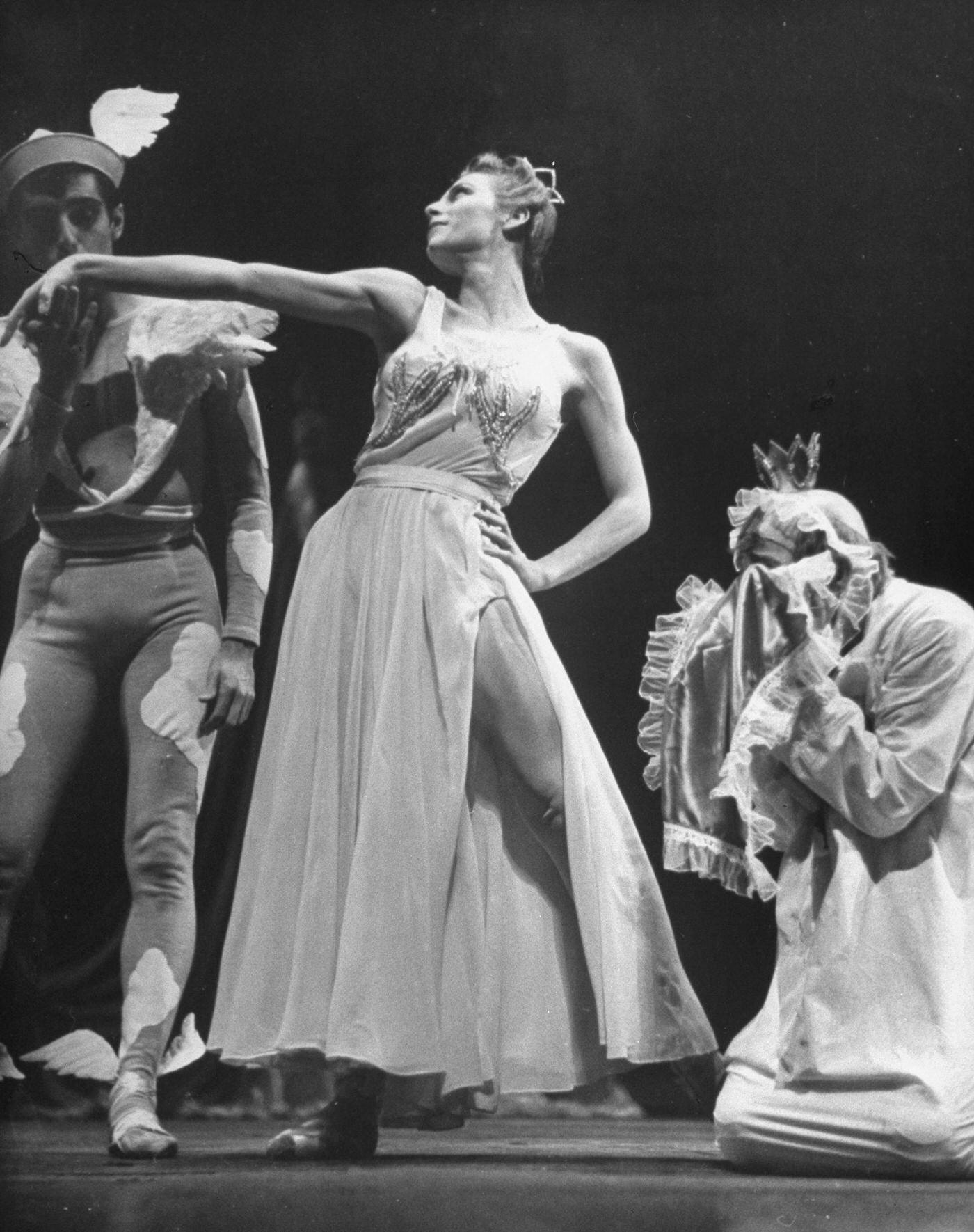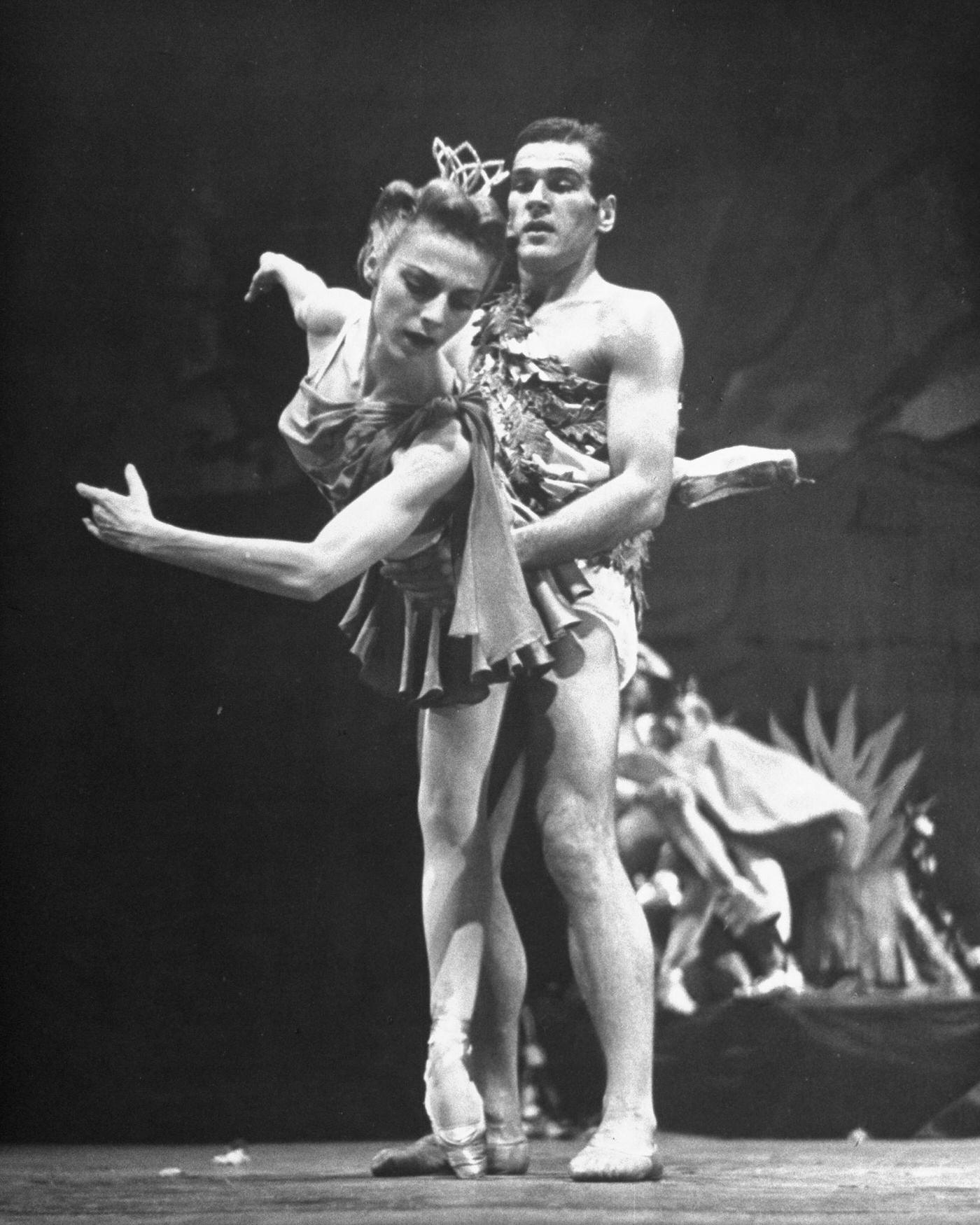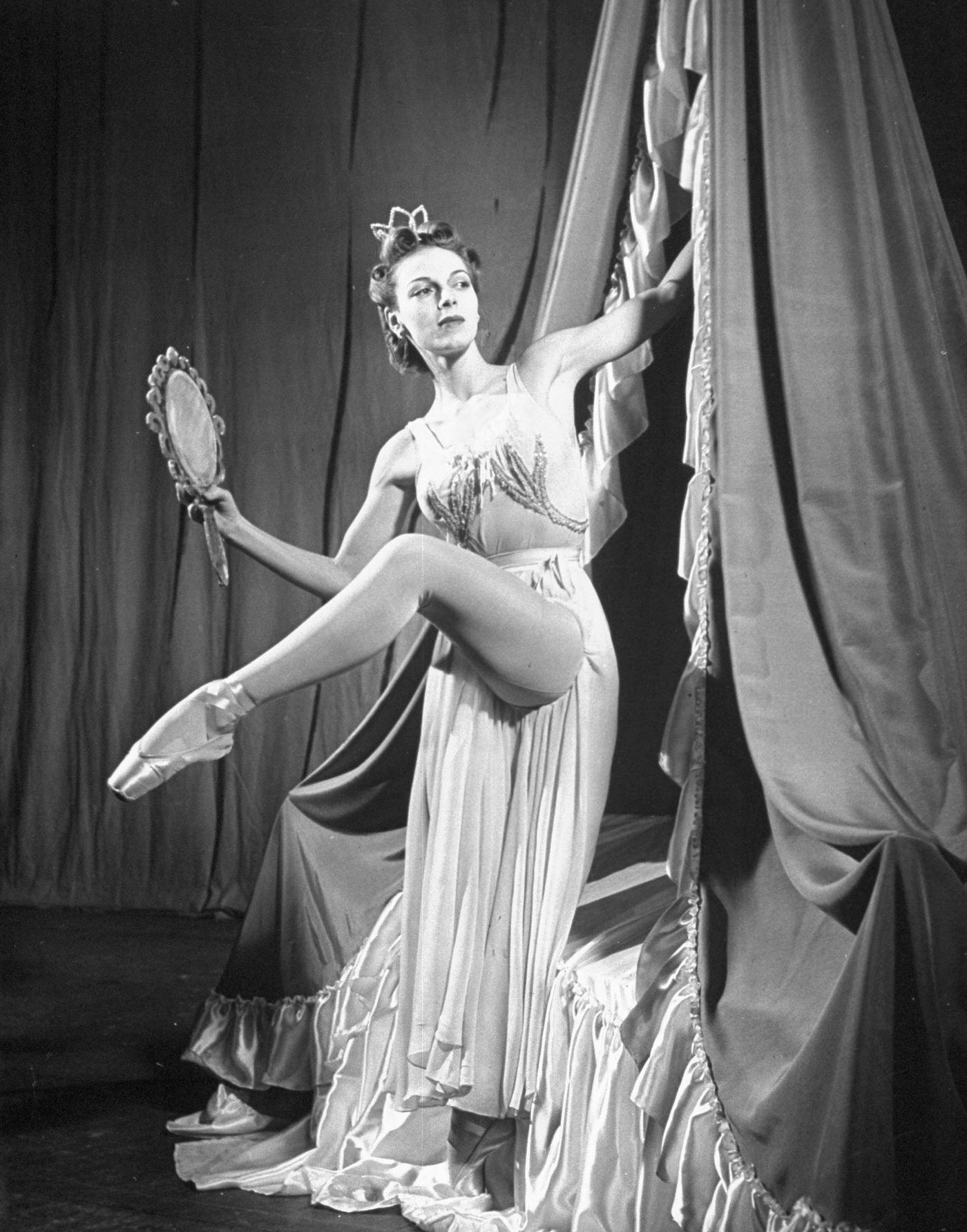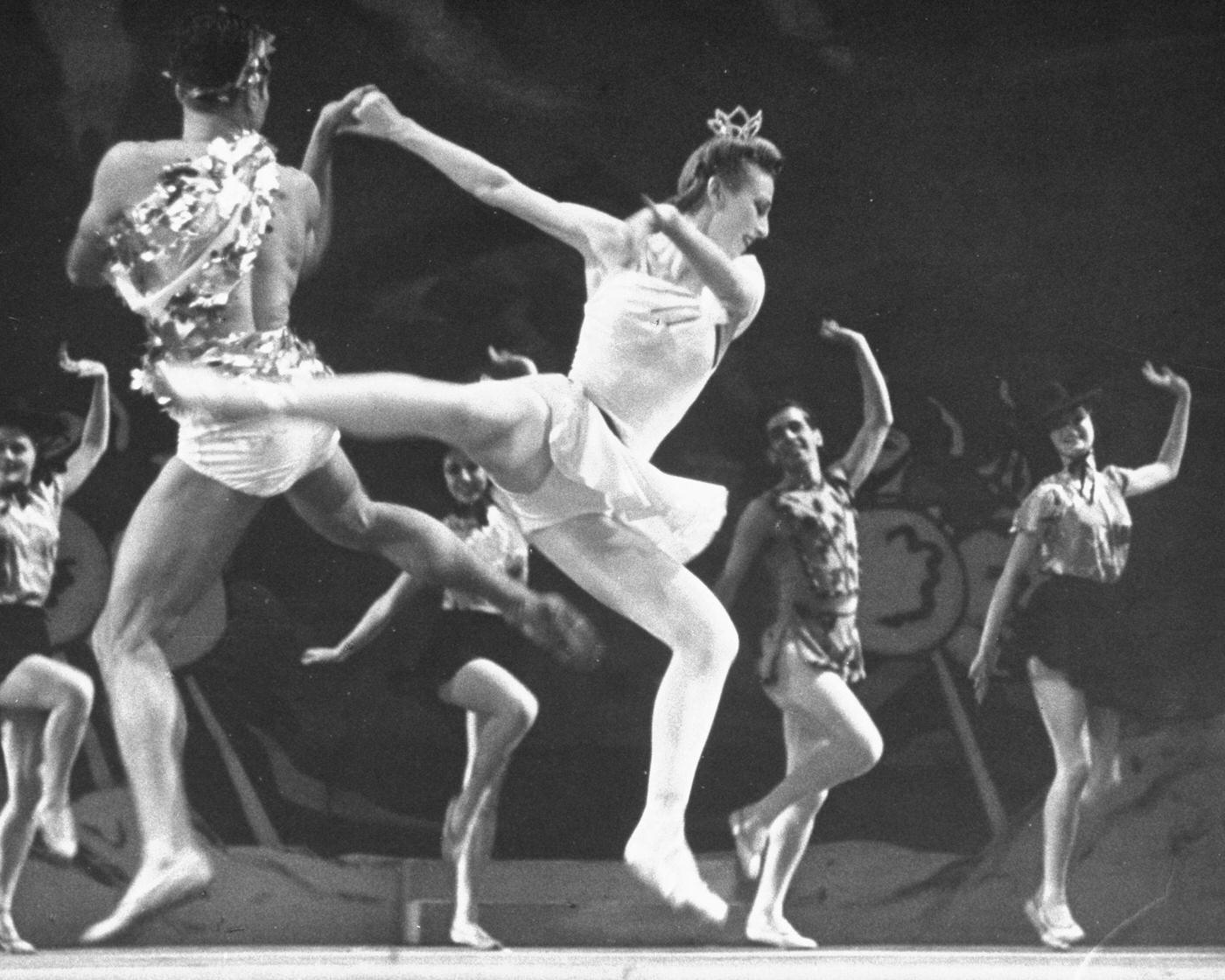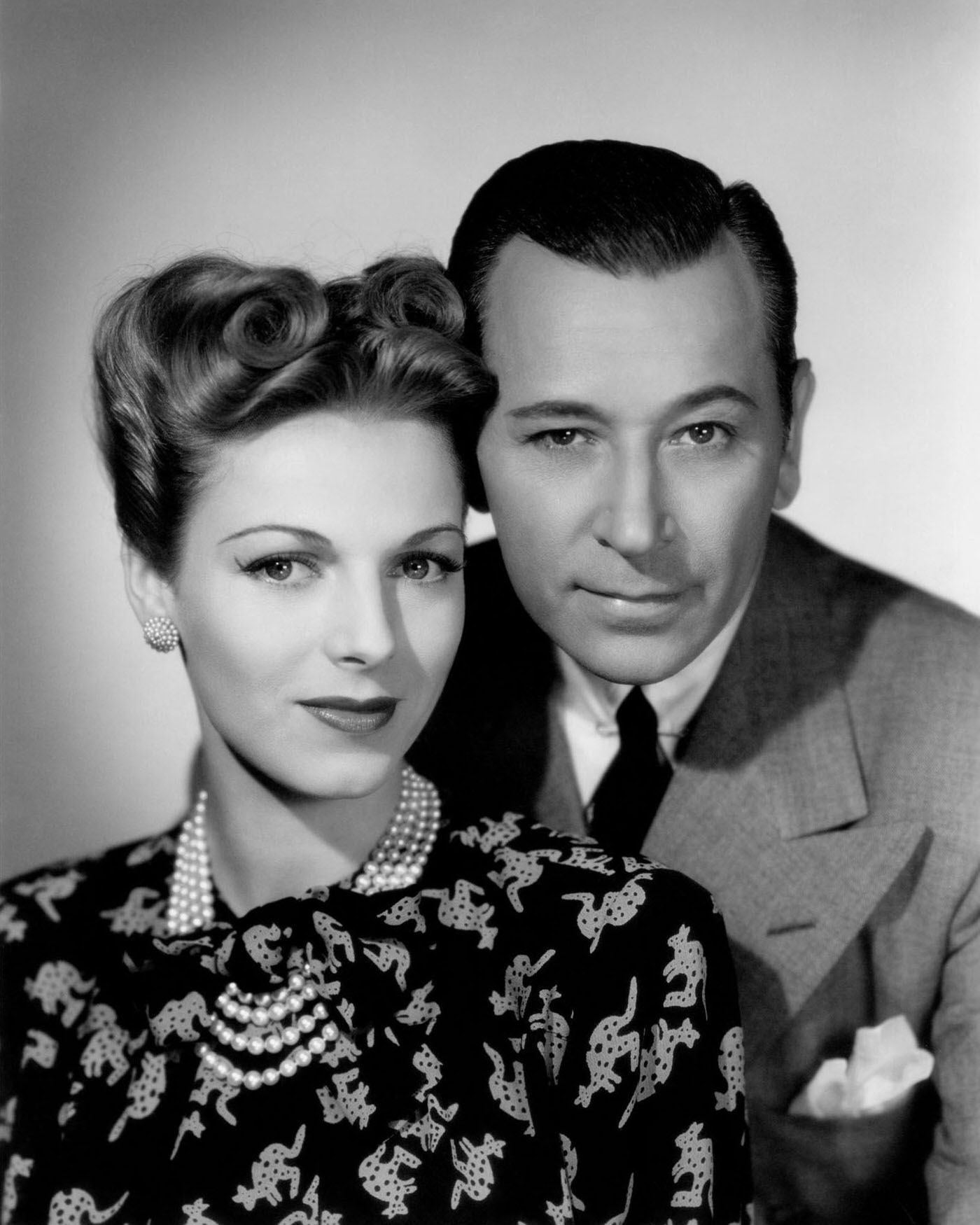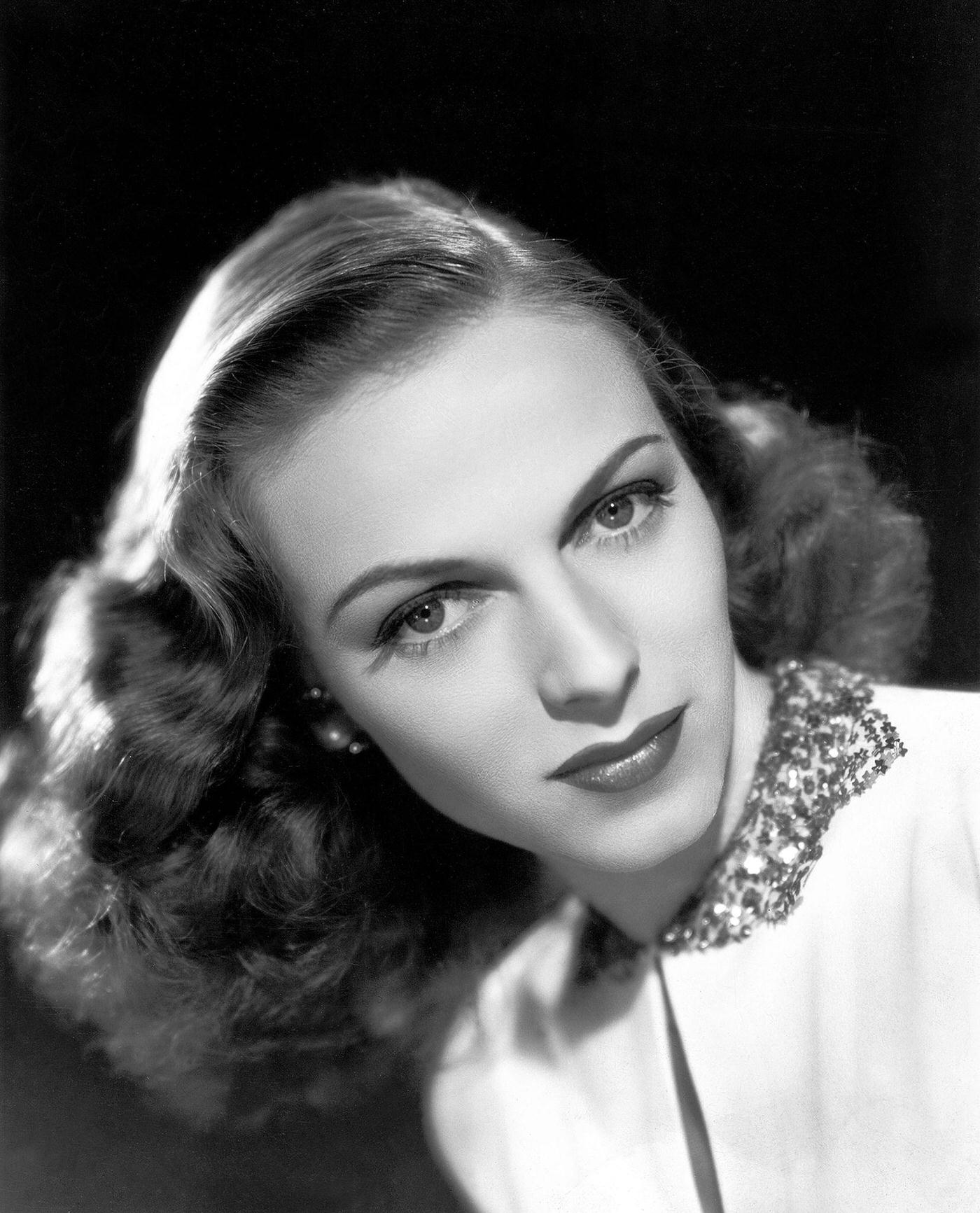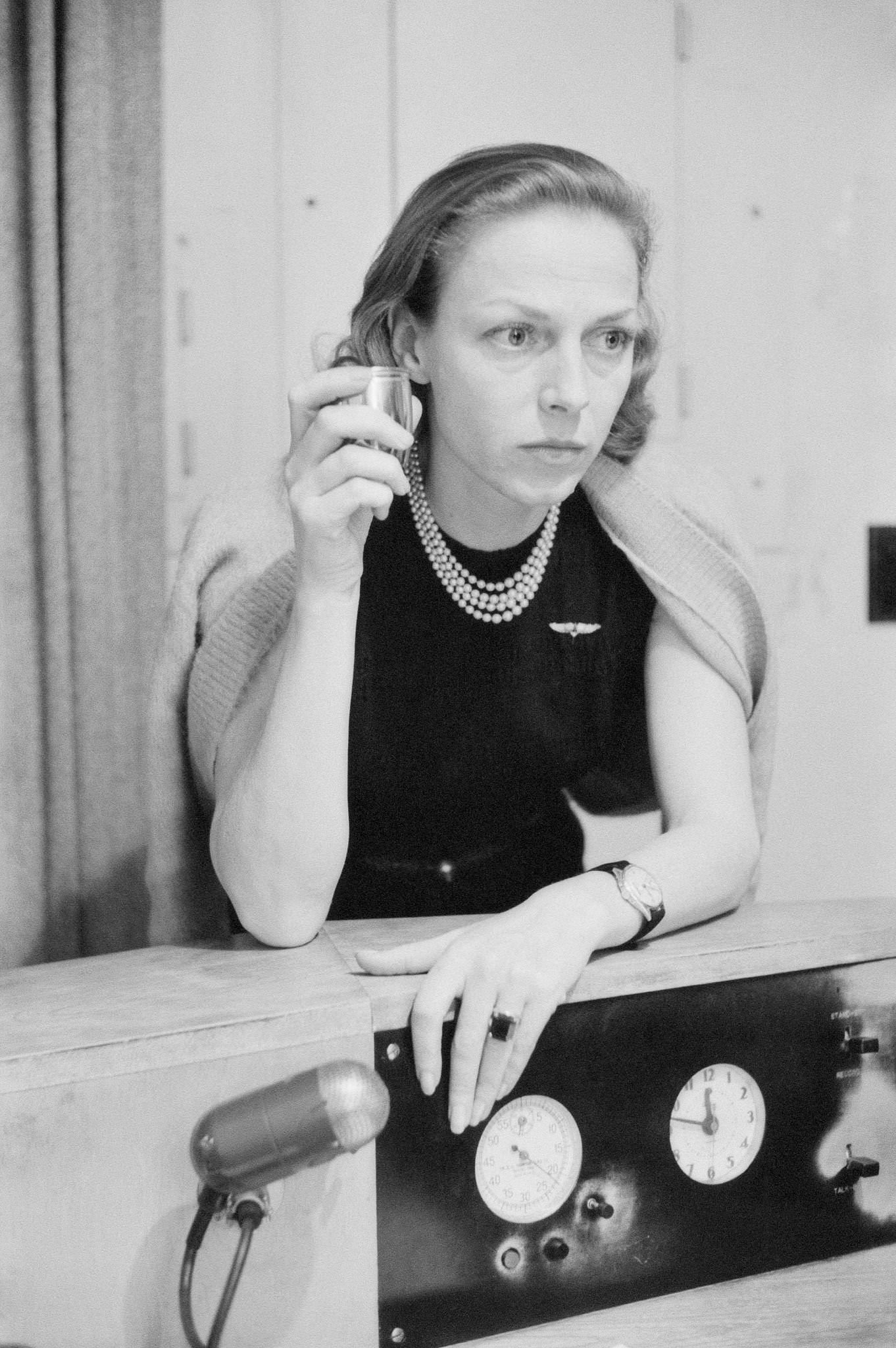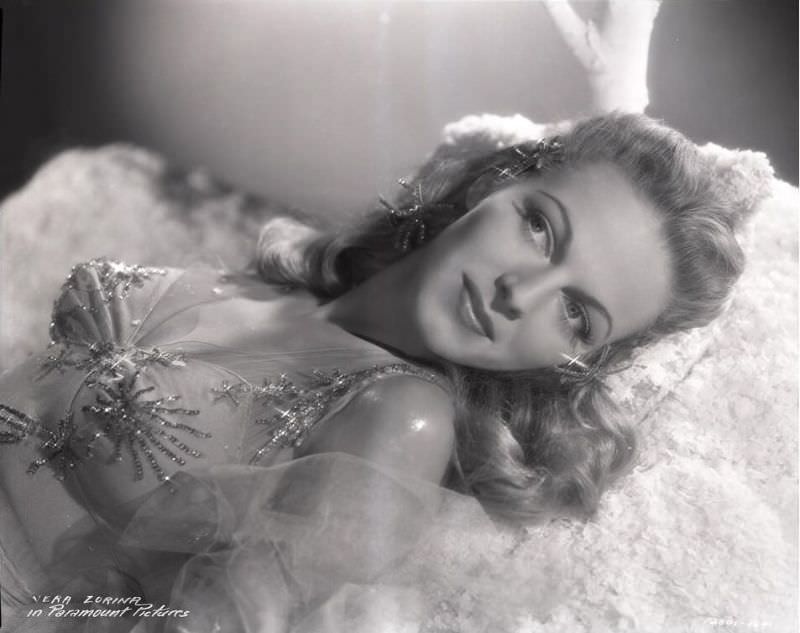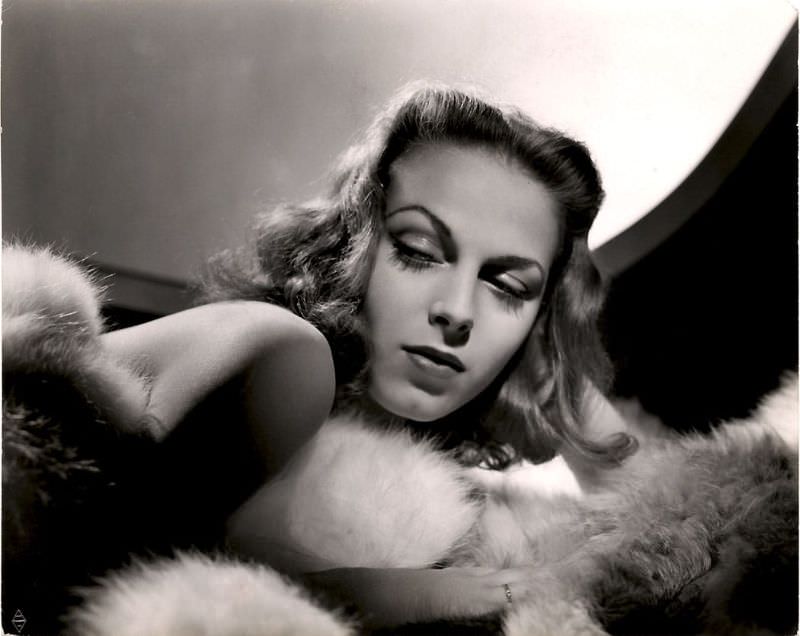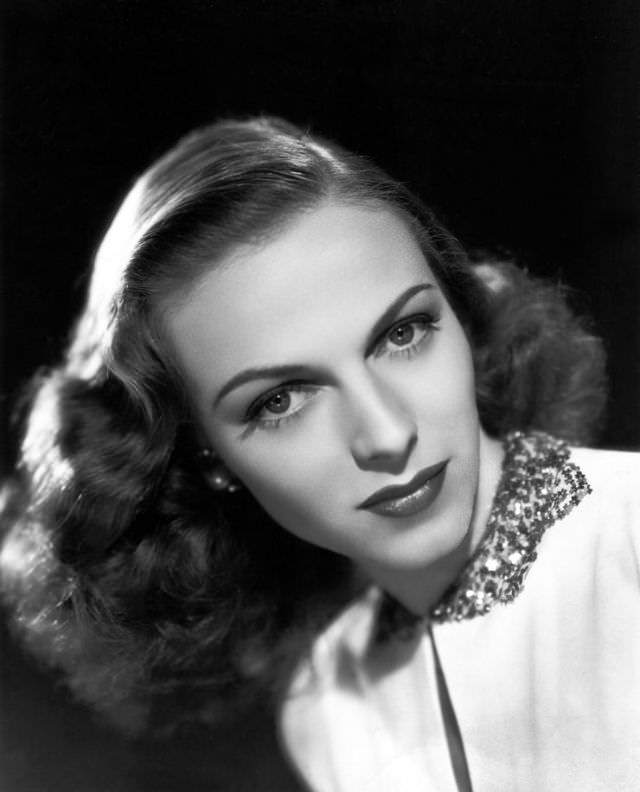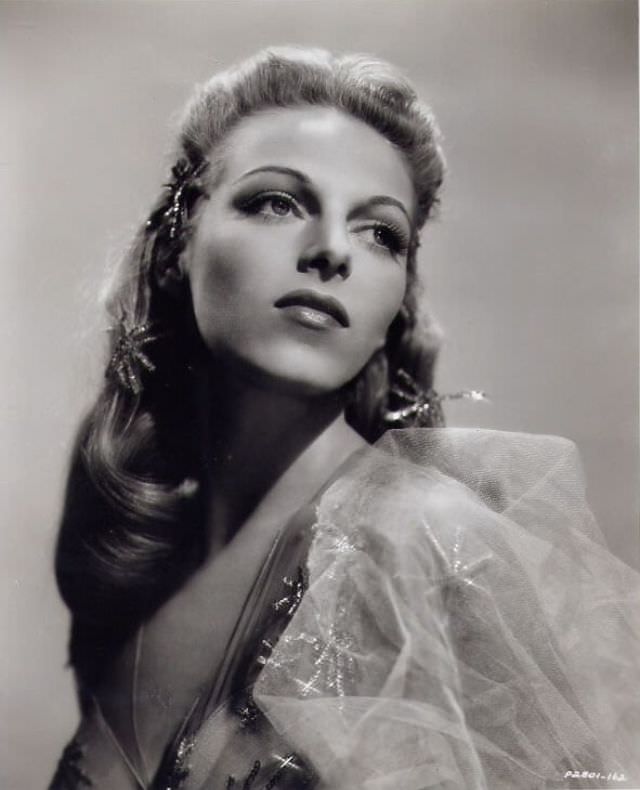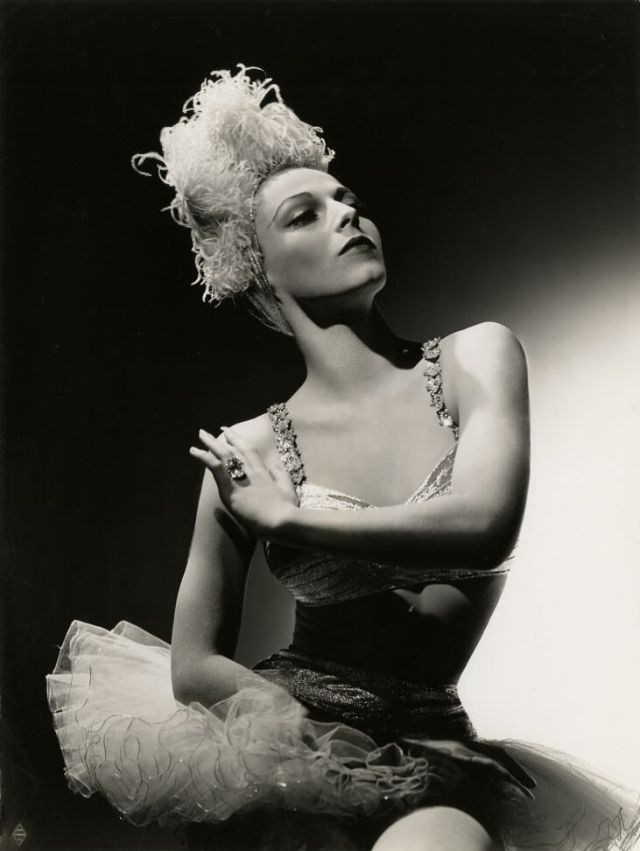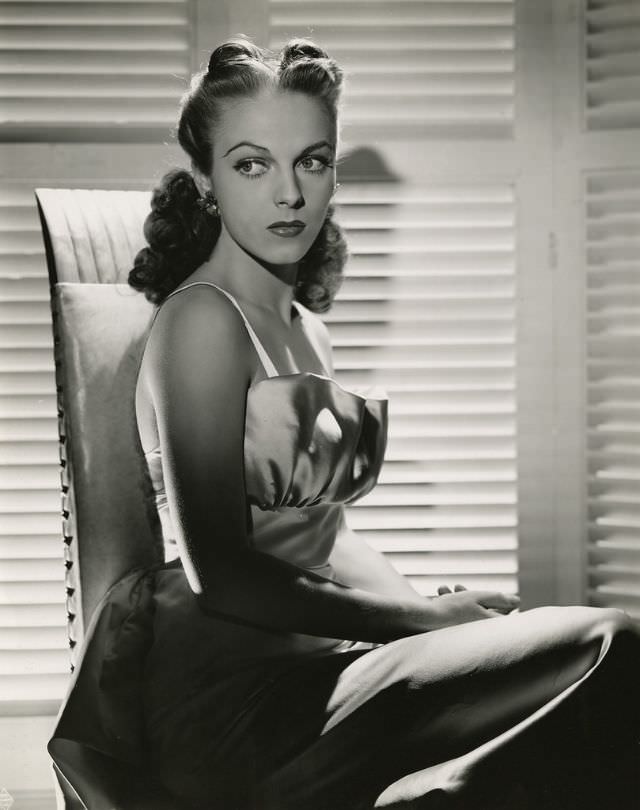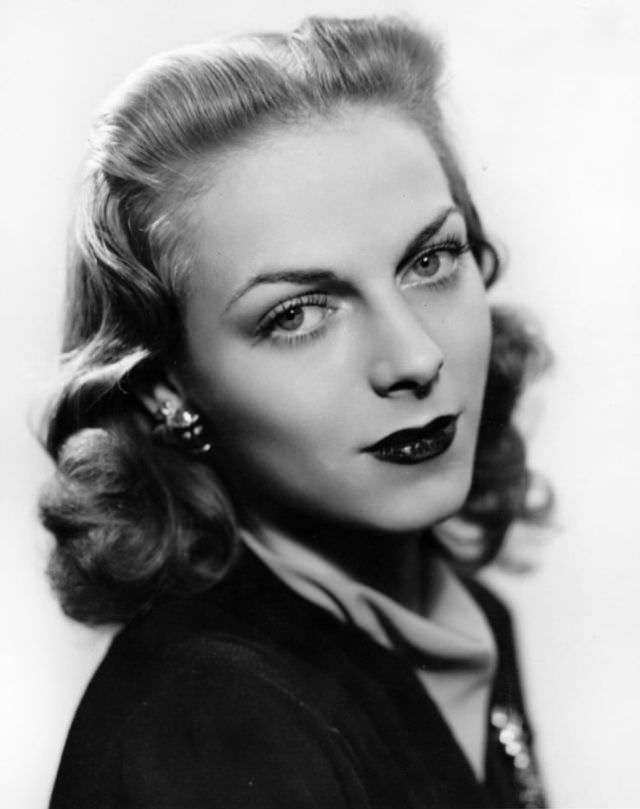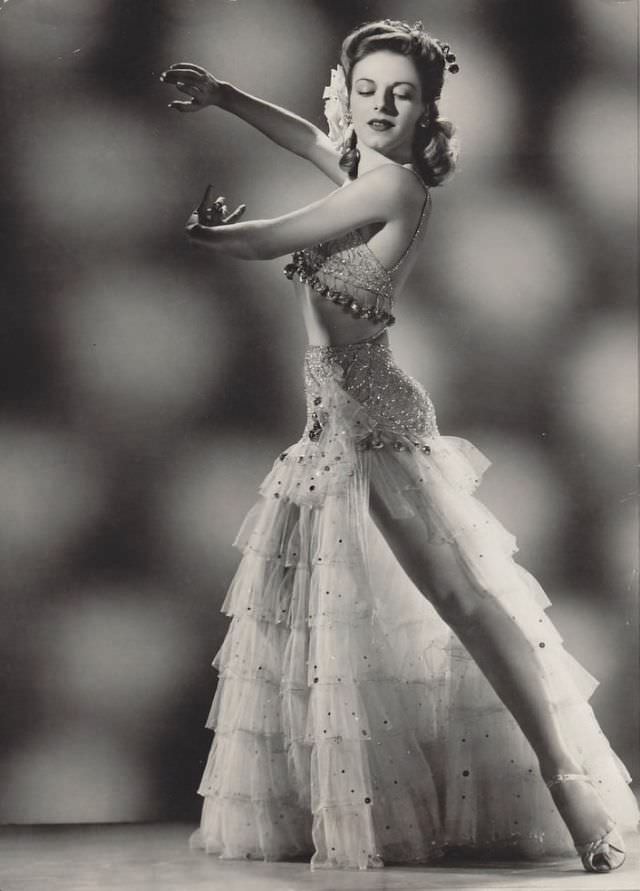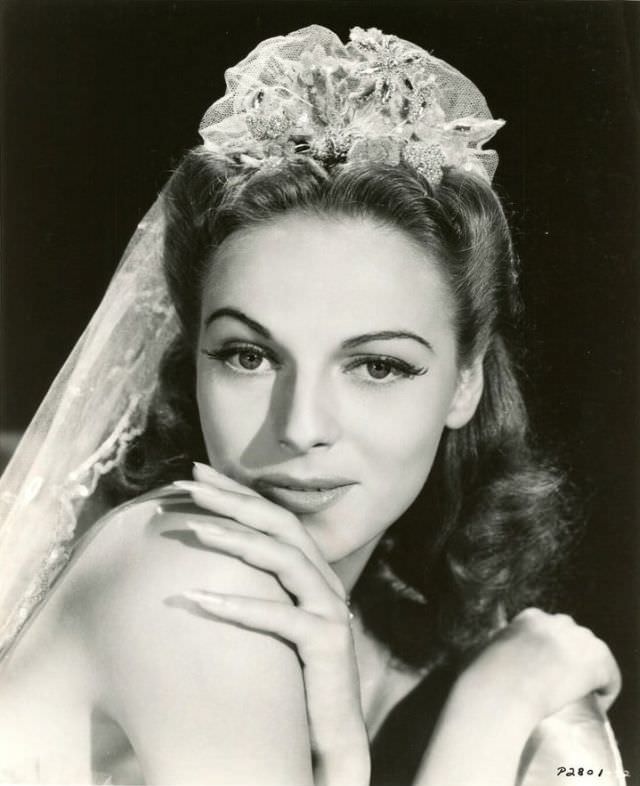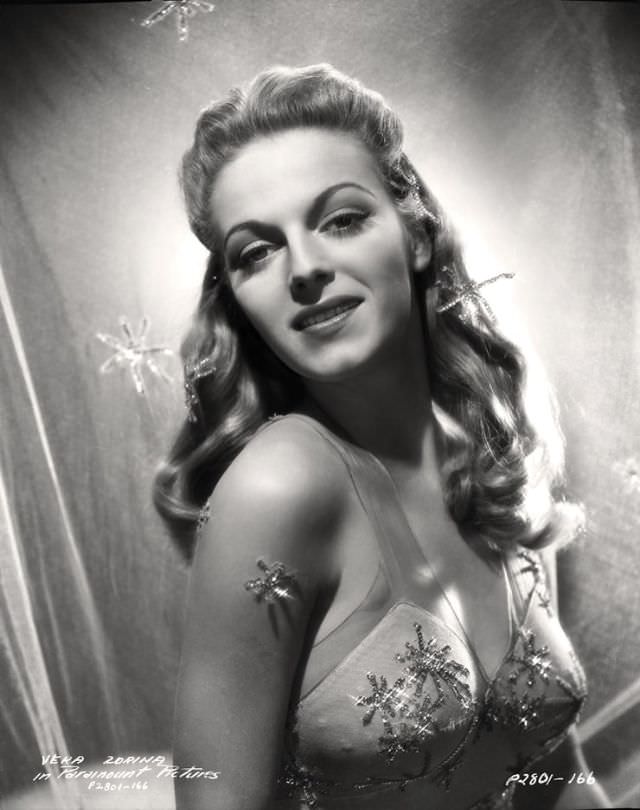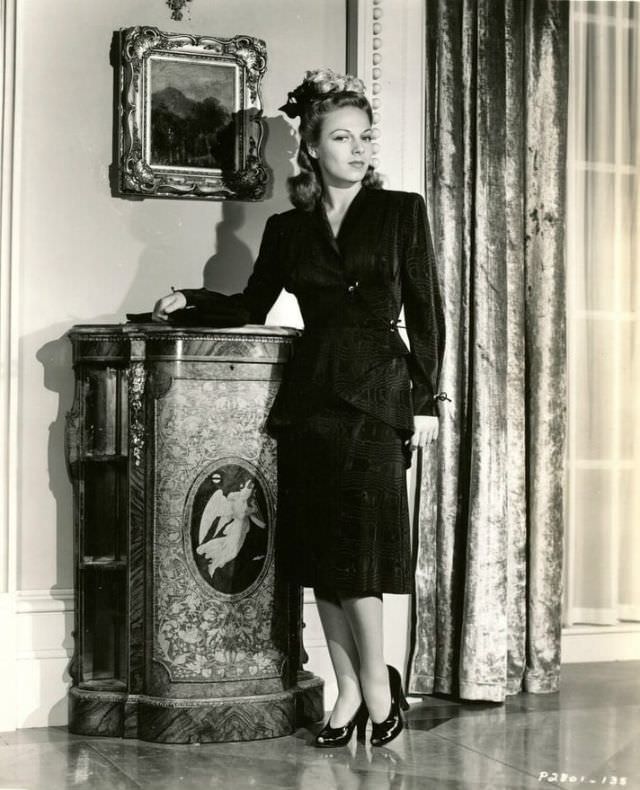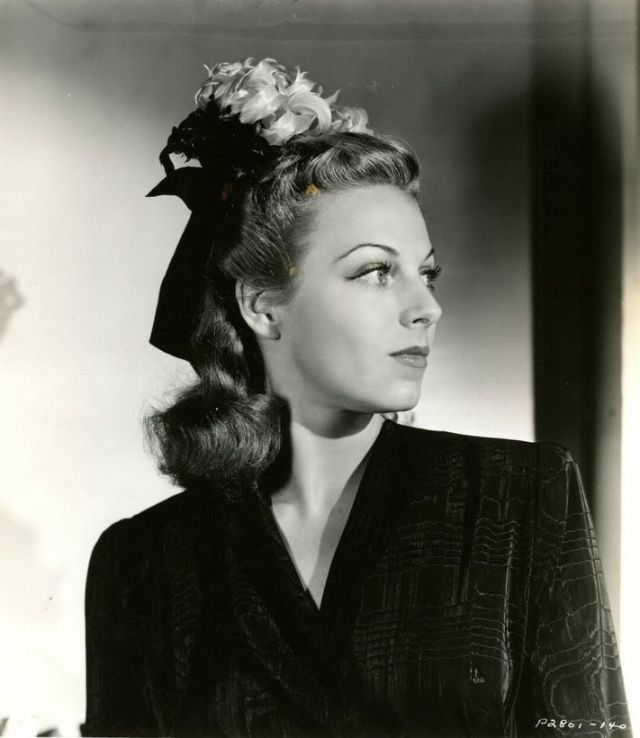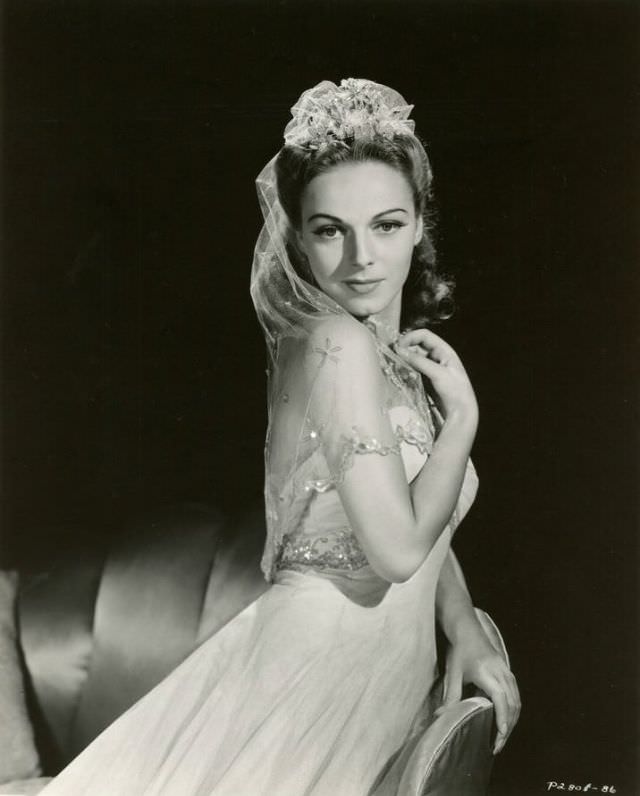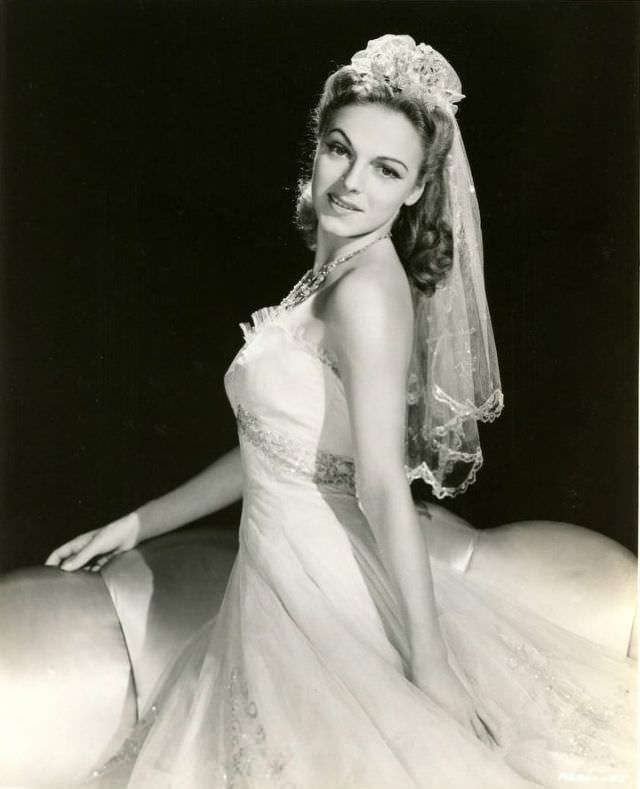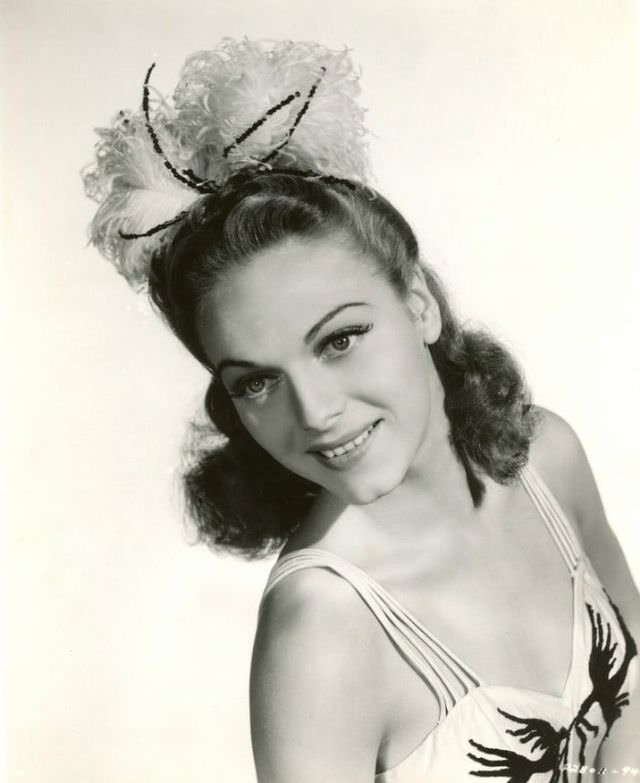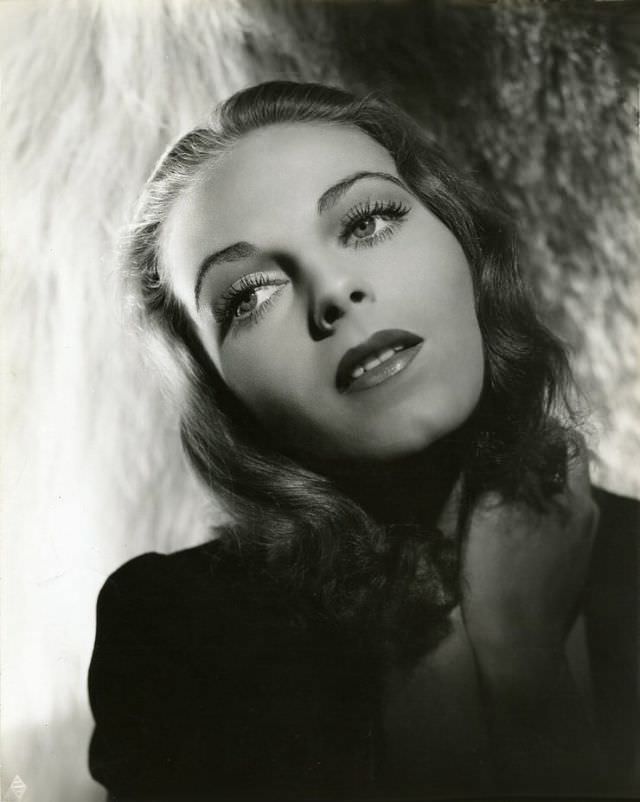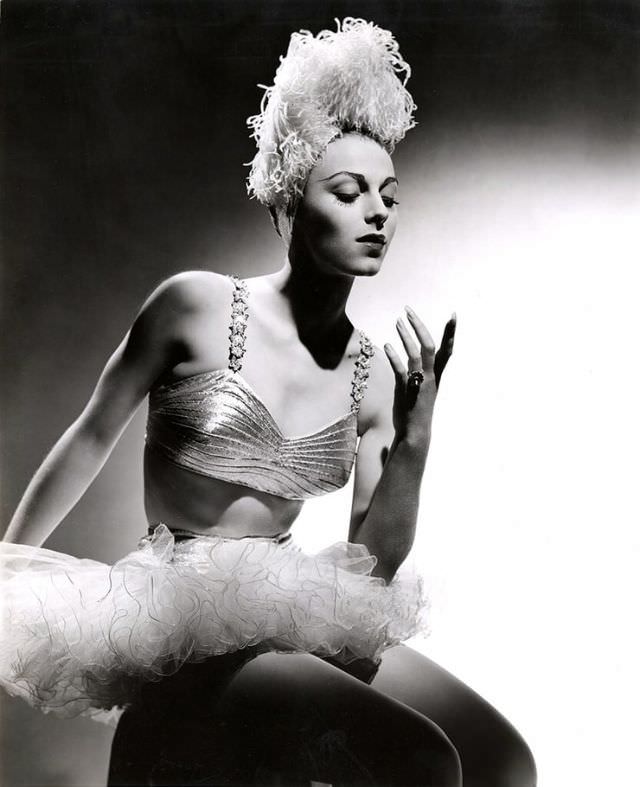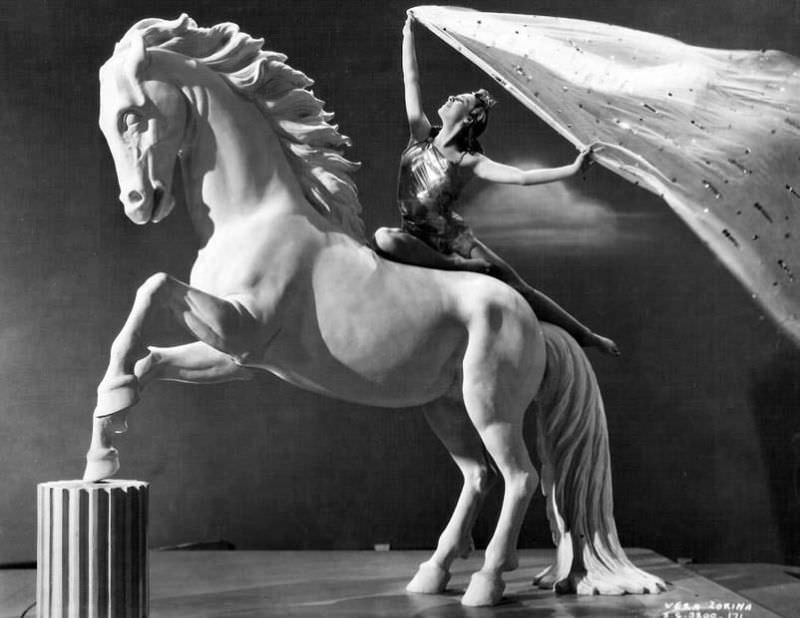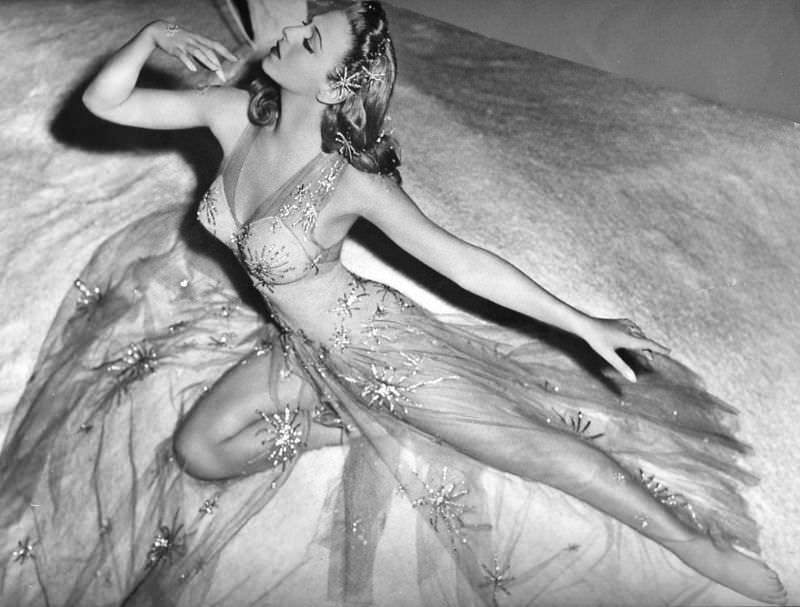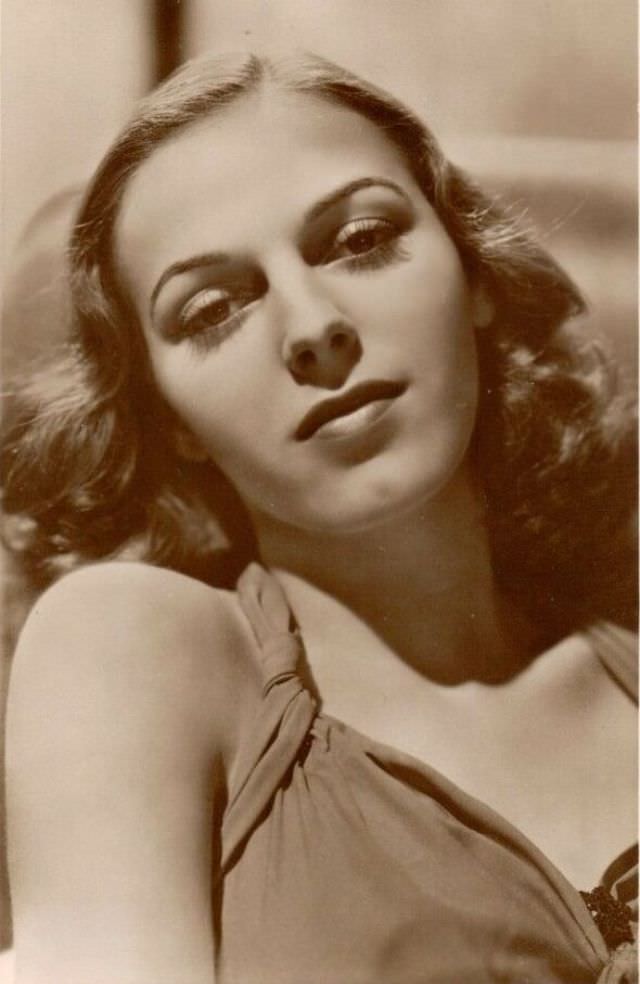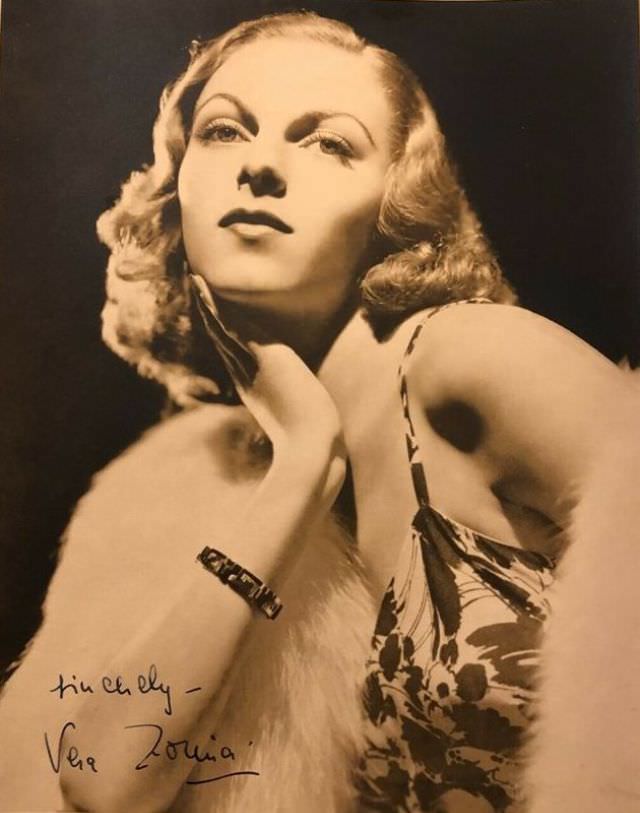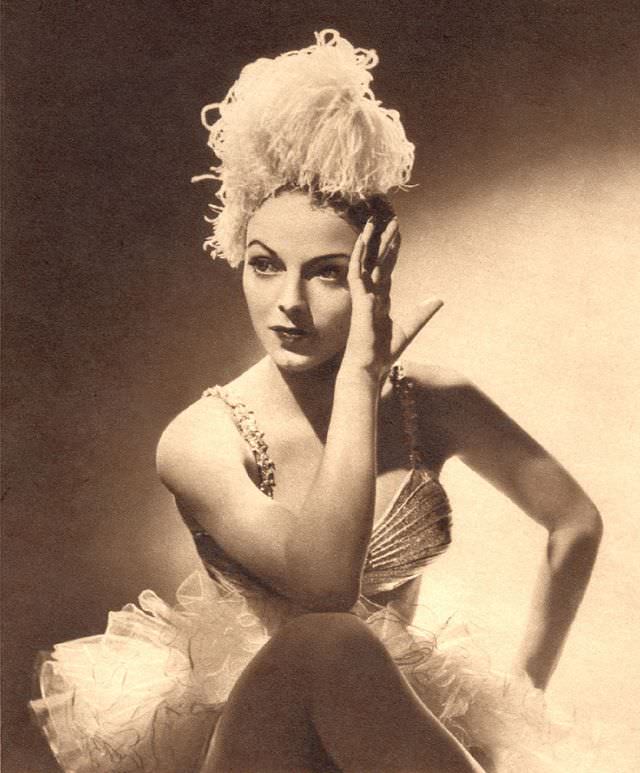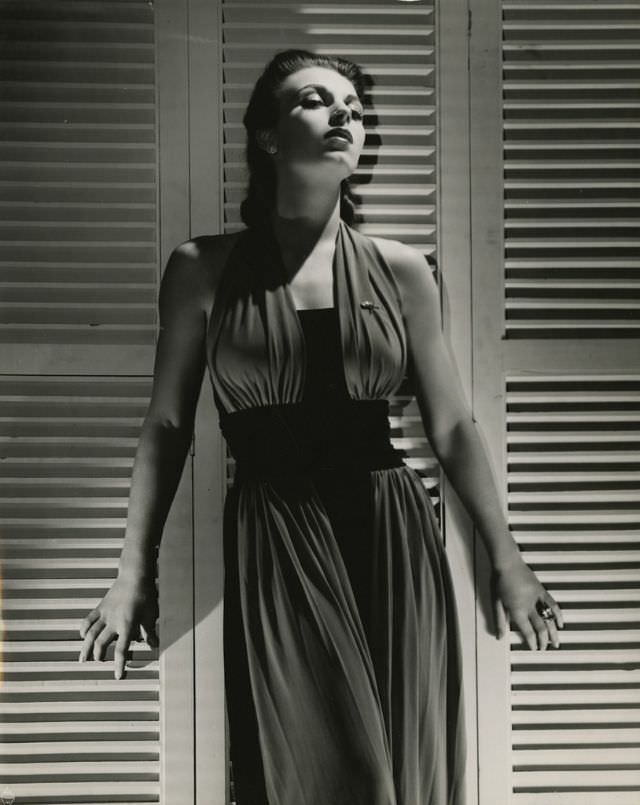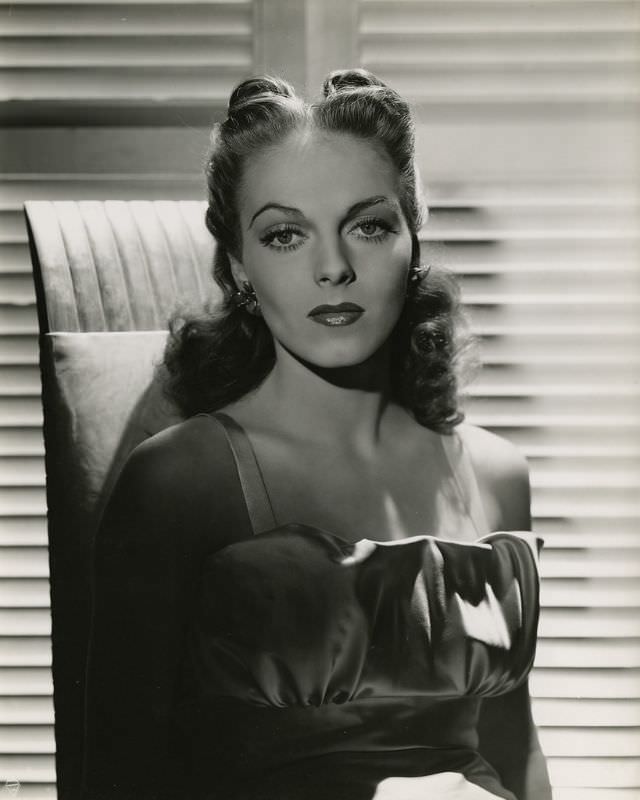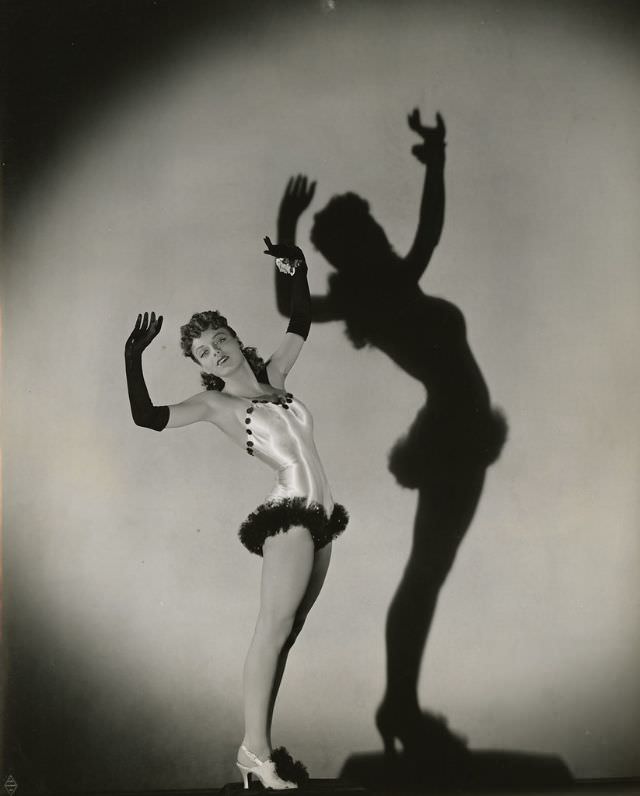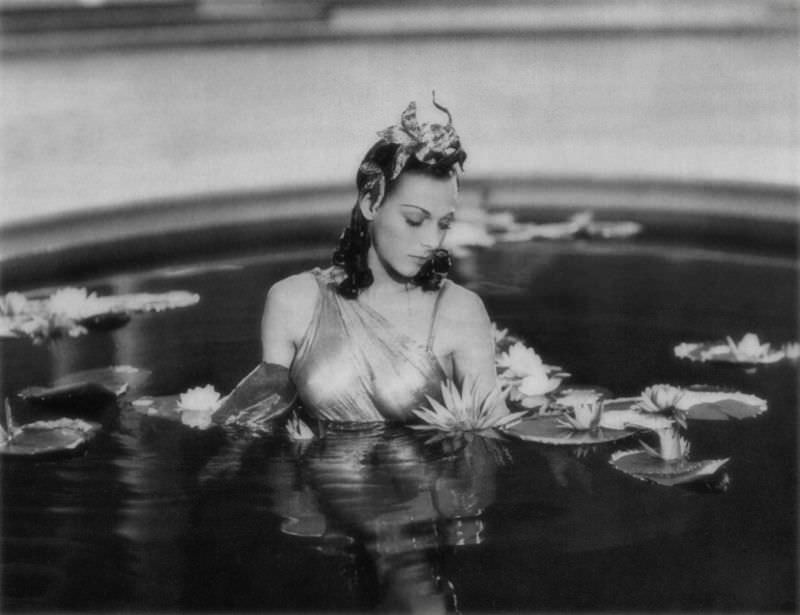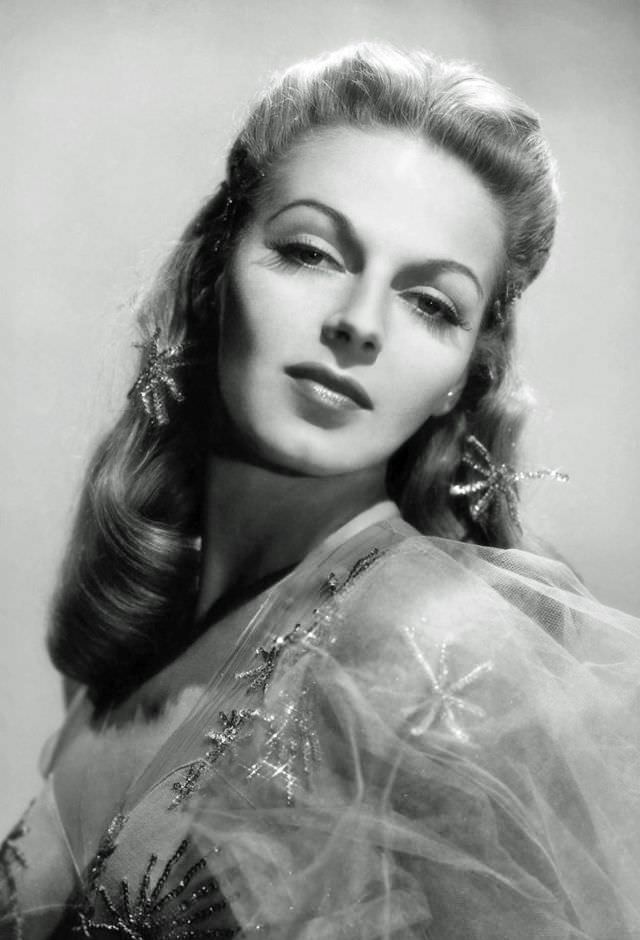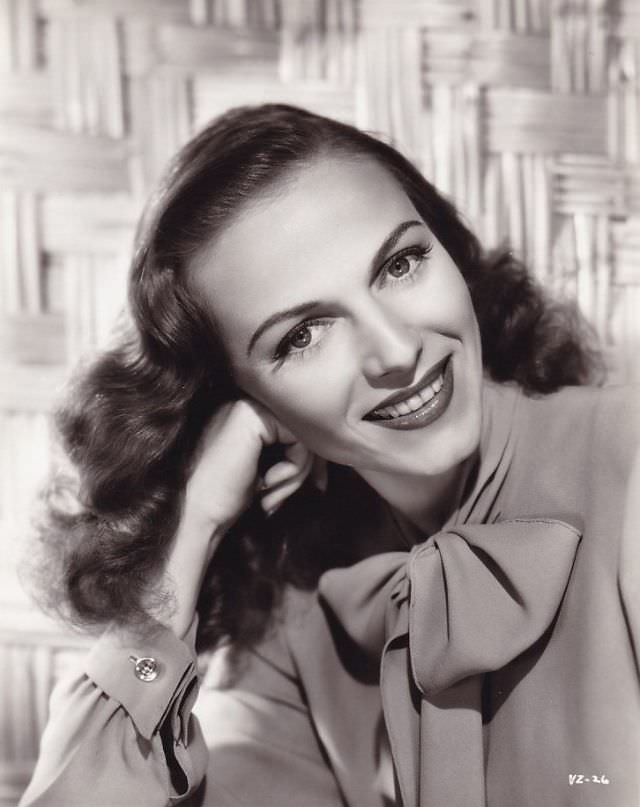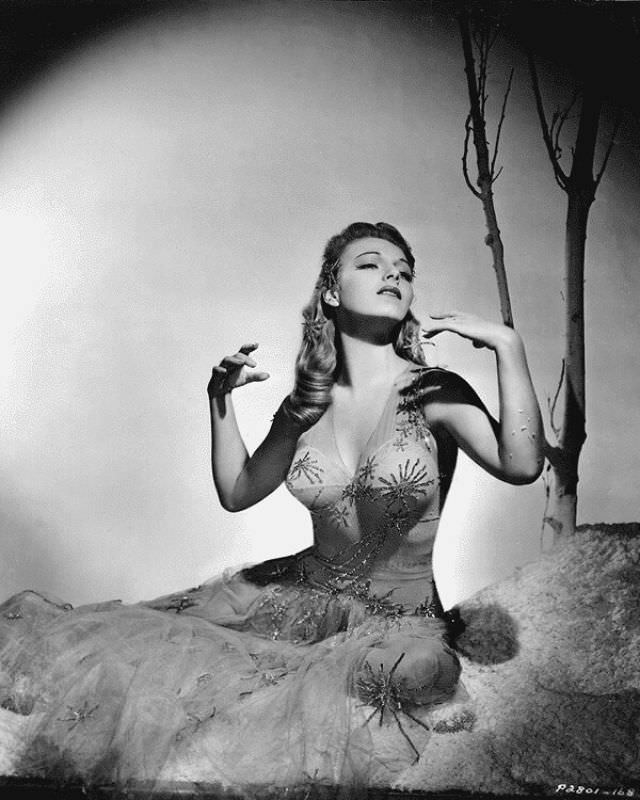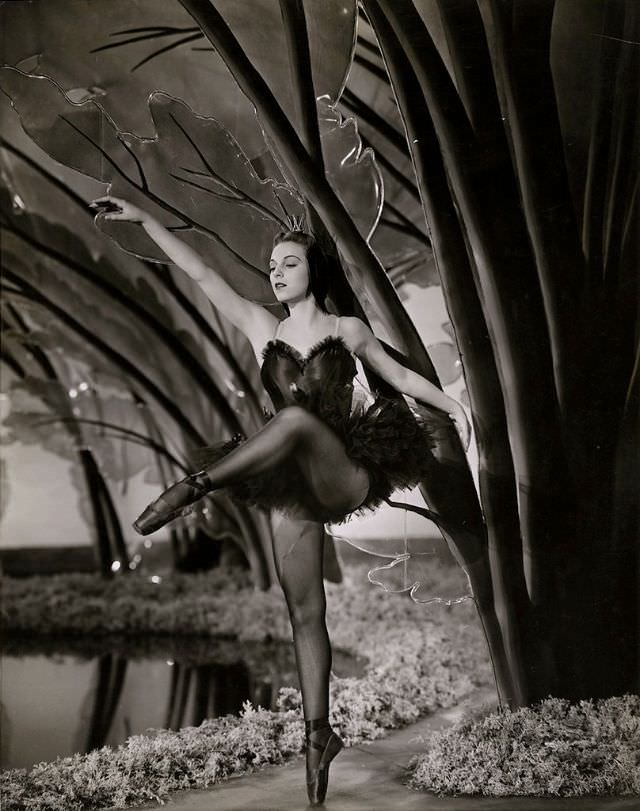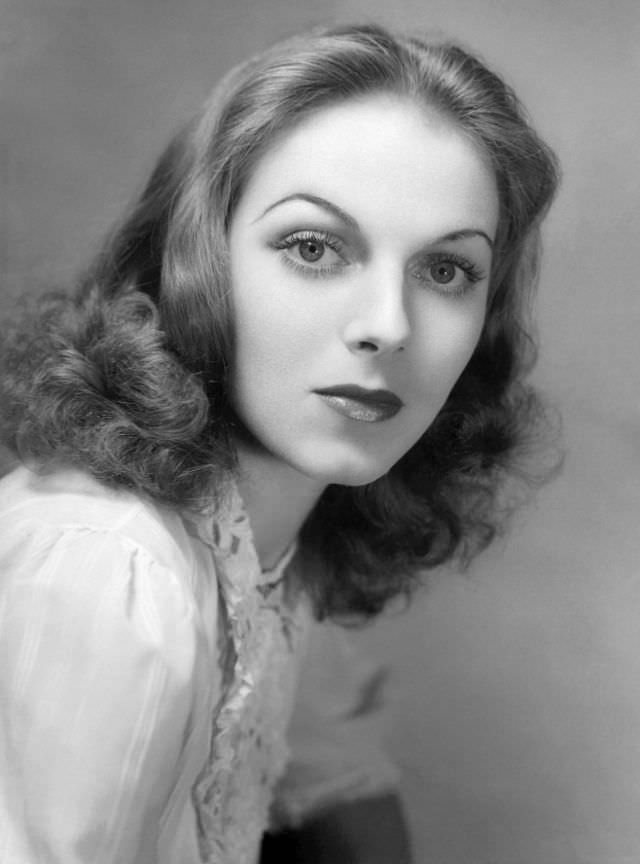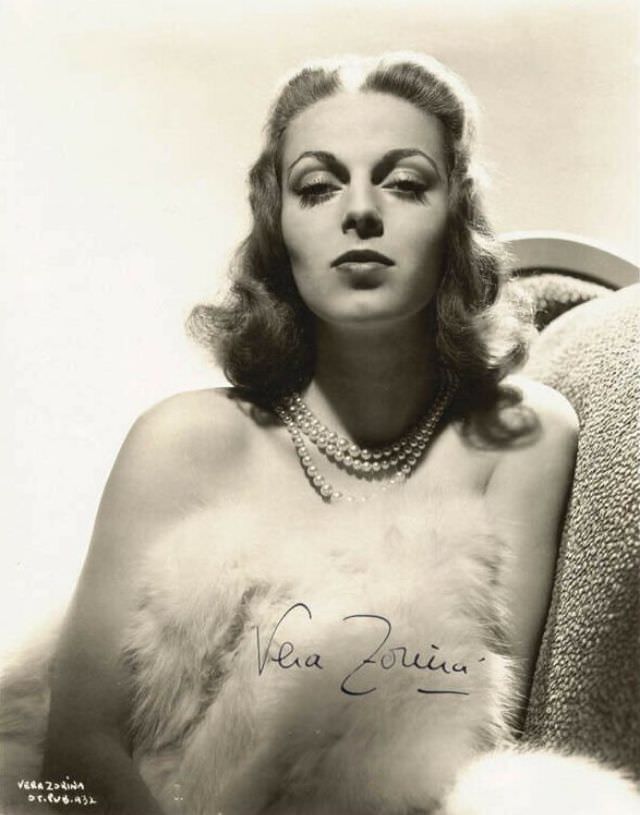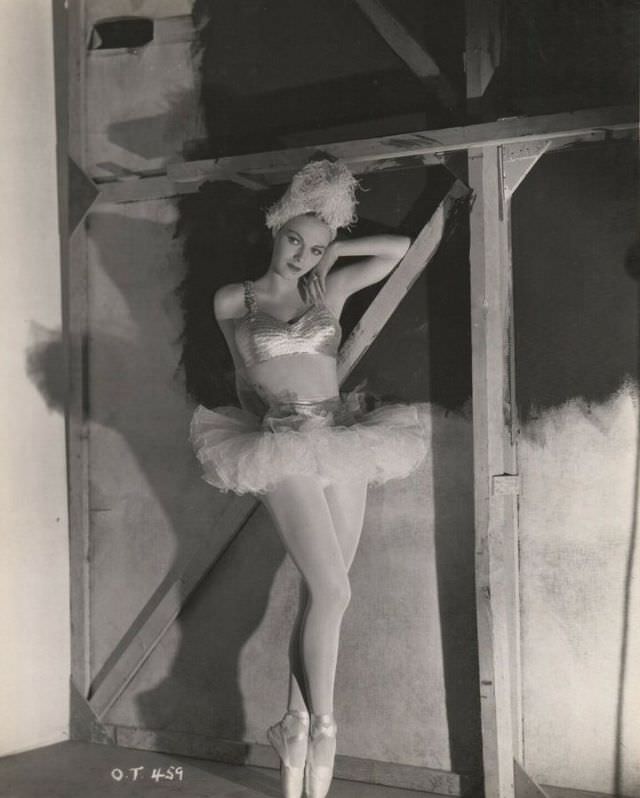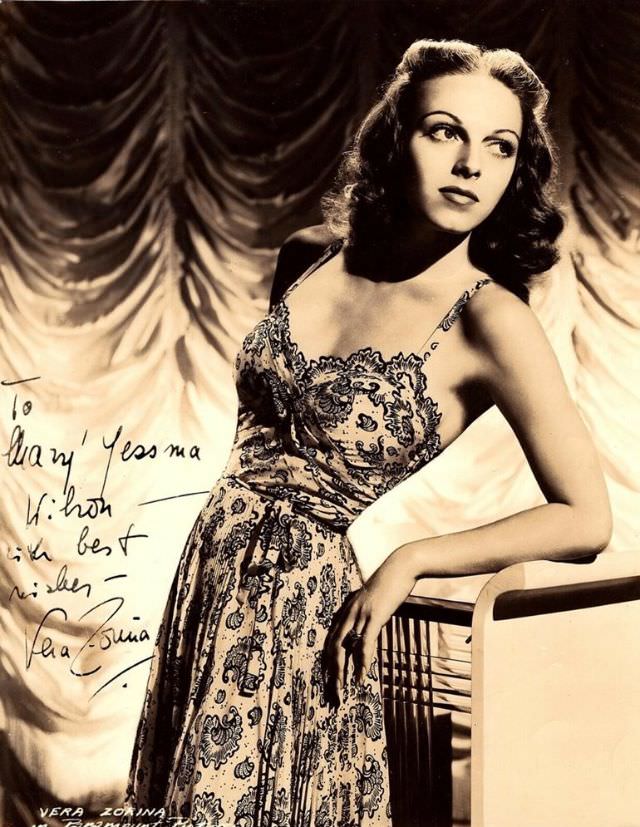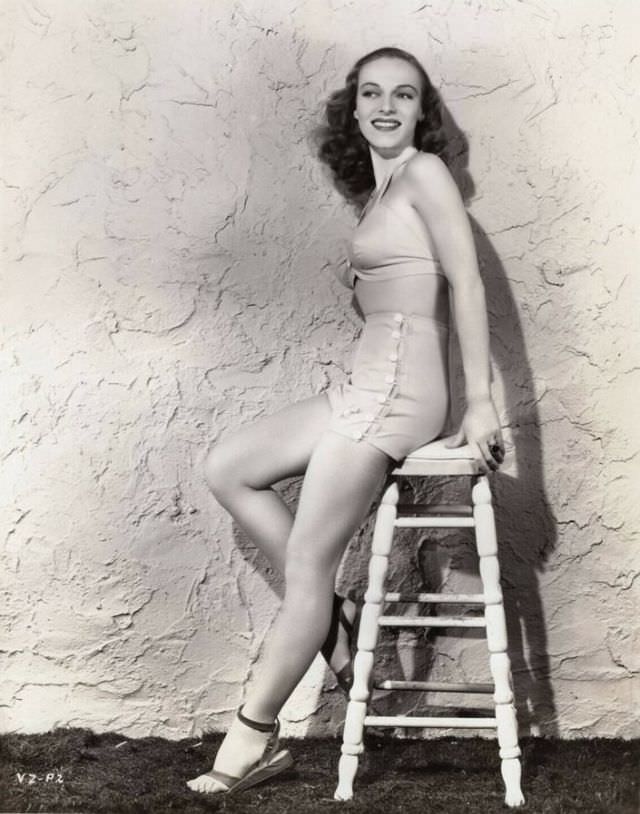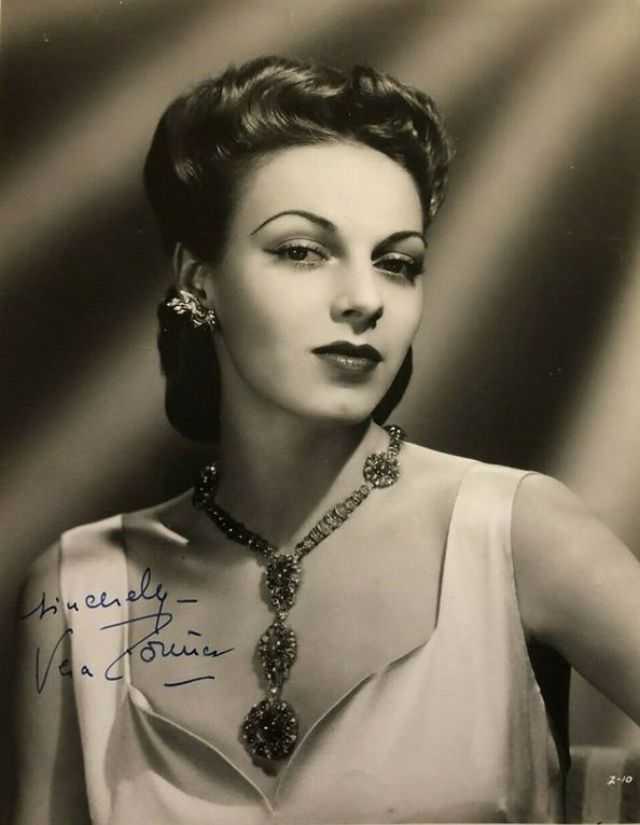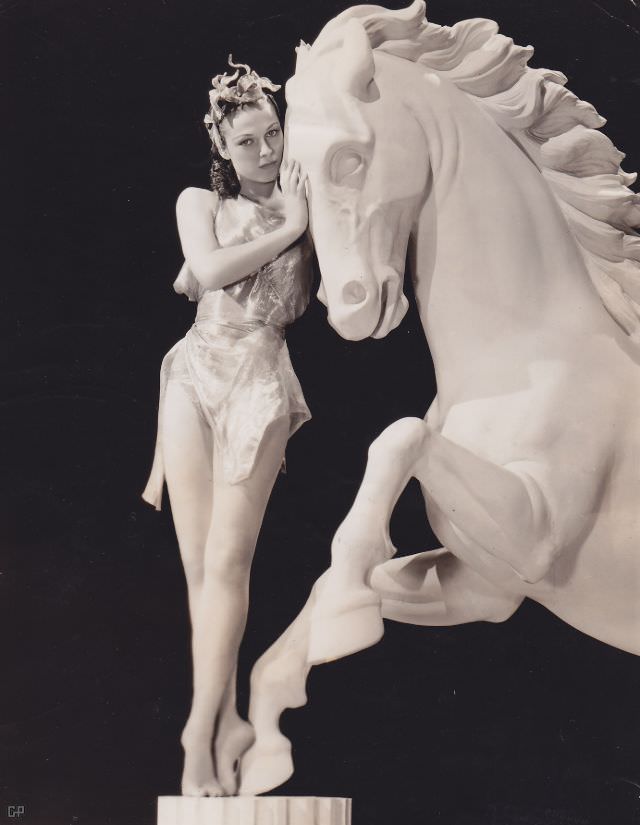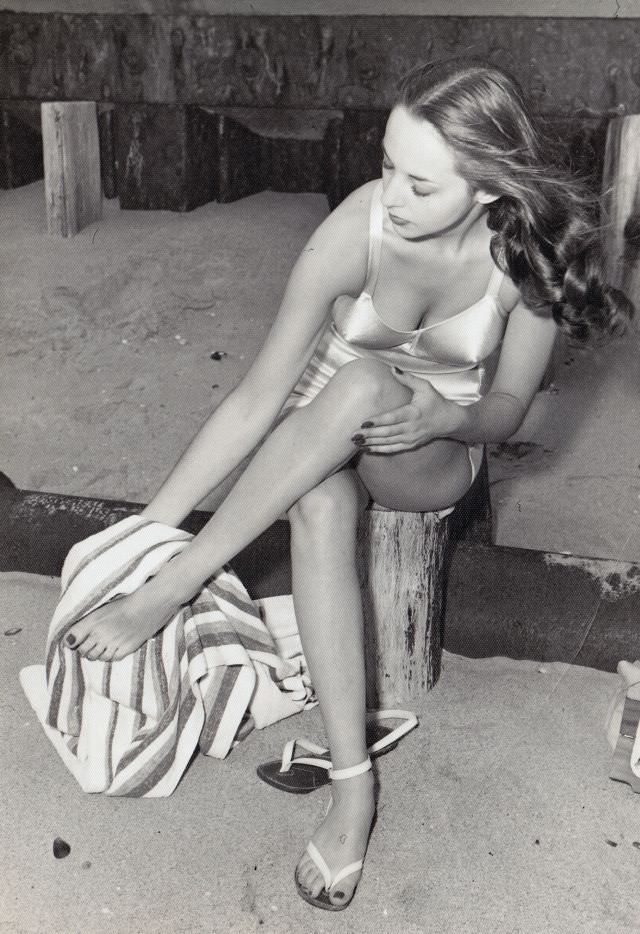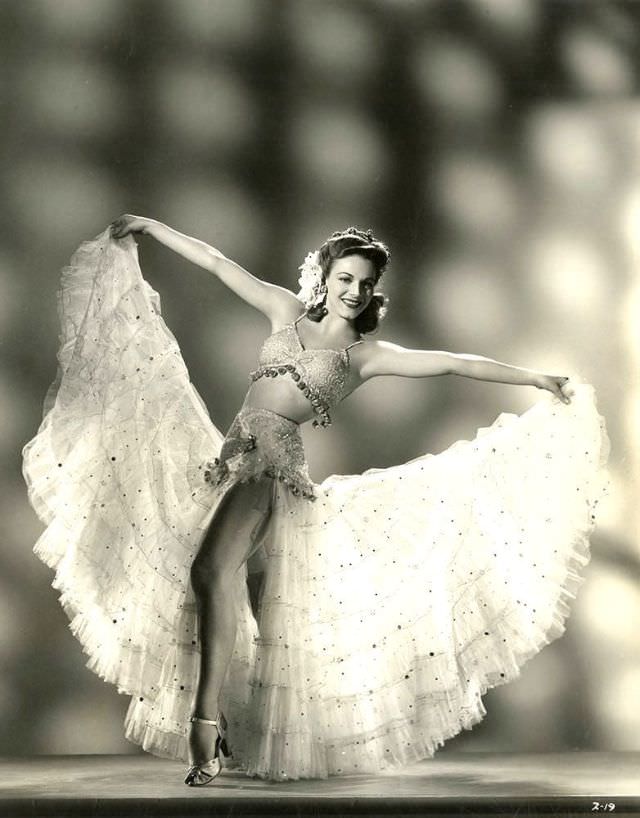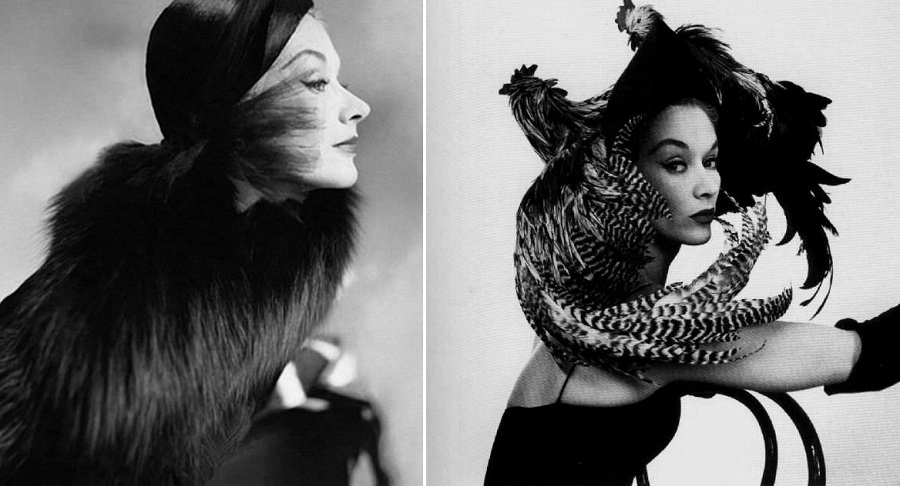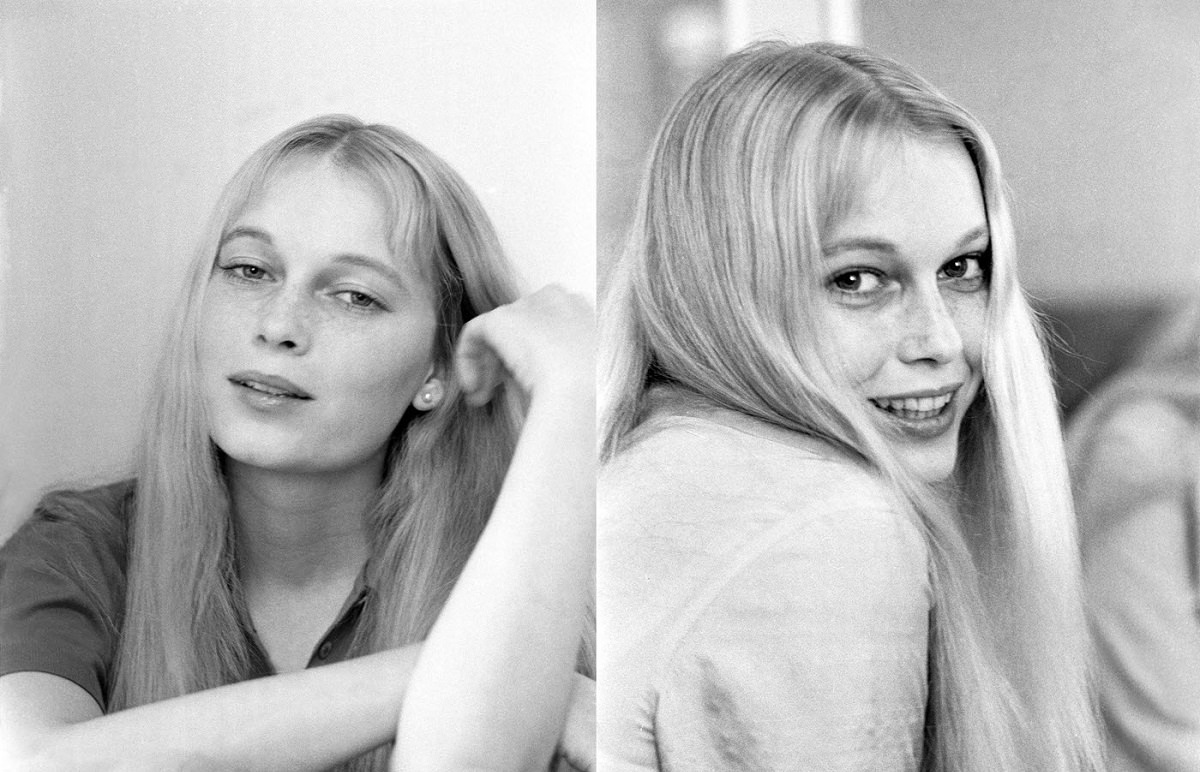Vera Zorina, born Eva Brigitta Hartwig in Berlin, Germany, on January 2, 1917, was a captivating ballerina and actress who effortlessly fused ballet’s grace with Hollywood’s glamour. Known for her stunning beauty and exceptional talent, Zorina captivated audiences on stage and screen during her illustrious career. This post explores her journey from humble beginnings to becoming a revered icon in ballet and film and some of her stunning photographs.
Early Life and Ballet Training
Zorina’s passion for dance began at an early age. Born to a Norwegian mother and a German father, she was exposed to ballet through her mother, a former dancer. Recognizing her daughter’s natural talent and potential, her mother enrolled her in the prestigious Berlin State Ballet School.
Under the tutelage of renowned ballet masters, Zorina honed her skills, and by the age of 12, she was already performing with the Berlin State Ballet. Her talent and dedication earned her a scholarship to study with Olga Preobrajenska, one of the leading ballet teachers of the time, in Paris.
The Breakthrough and International Stardom
Zorina’s career took a dramatic turn when, at the age of 18, she was discovered by legendary choreographer George Balanchine. He was immediately captivated by her beauty and talent and saw in her a muse for his groundbreaking choreography. After changing her name to Vera Zorina, she joined Balanchine’s Ballet Russe de Monte Carlo and starred in several of his productions, including “The Prodigal Son” and “The Goldwyn Follies.”
Her association with Balanchine catapulted Zorina into international stardom, and soon Hollywood came knocking. Samuel Goldwyn, a powerful movie producer, signed her to a film contract, ultimately leading to her starring in multiple films throughout the late 1930s and 1940s.
Ballet Meets Hollywood
Zorina’s foray into Hollywood allowed her to bring the elegance of ballet to the silver screen, as she showcased her extraordinary dancing abilities in films such as “The Goldwyn Follies” (1938), “On Your Toes” (1939), and “Louisiana Purchase” (1941). These films entertained audiences and introduced many to ballet, an art form often seen as inaccessible to the masses.
Her role as a ballet dancer in “On Your Toes” was particularly significant, as it marked one of the first times a ballet production was adapted for the screen. The film’s success helped to pave the way for future ballet films and solidified Zorina’s position as a pioneering figure in the crossover between ballet and Hollywood.
Broadway Success and Later Years
Zorina’s success on screen translated to Broadway, where she starred in a series of hit productions. “I Married an Angel” (1938), “Louisiana Purchase” (1940), and “Dream with Music” (1944) all showcased her talent for dance and acting, earning her rave reviews from critics and audiences alike.
In the late 1940s, Zorina returned to Europe. She continued to perform on stage, including a memorable turn as Anna Karenina in the 1961 London production of the ballet “Anna Karenina,” based on Tolstoy’s classic novel.
Zorina’s later years were dedicated to teaching and directing, as she shared her passion for ballet with future generations. She served as the artistic director of the Norwegian National Ballet from 1966 to 1970 and taught at the London Festival Ballet School. She remained active in the dance world well into her later years, mentoring young dancers and serving as a guest teacher at various dance institutions.
Legacy
Vera Zorina’s impact on the worlds of ballet and film is indisputable. As one of the first ballerinas to successfully transition to Hollywood, she played a pivotal role in popularizing ballet and introducing it to a broader audience. Her performances on stage and screen were characterized by grace, elegance, and an undeniable presence that captivated audiences and left a lasting impression.
Throughout her career, Zorina worked with some of the most influential figures in dance, such as George Balanchine, who mentored her and was inspired by her talent. Their collaboration led to creation of iconic ballet productions that remain influential today.
Zorina’s dedication to her craft extended beyond her performances, as she actively contributed to developing ballet as an art form by teaching and directing. Her work with the Norwegian National Ballet and the London Festival Ballet School ensured that her knowledge and passion were passed on to future dancers, leaving a lasting legacy in dance.
In addition to her professional accomplishments, Zorina’s personal life was marked by a series of high-profile relationships, most notably her marriage to George Balanchine from 1938 to 1946. Though their marriage ended in divorce, their artistic partnership flourished and significantly impacted their careers.


